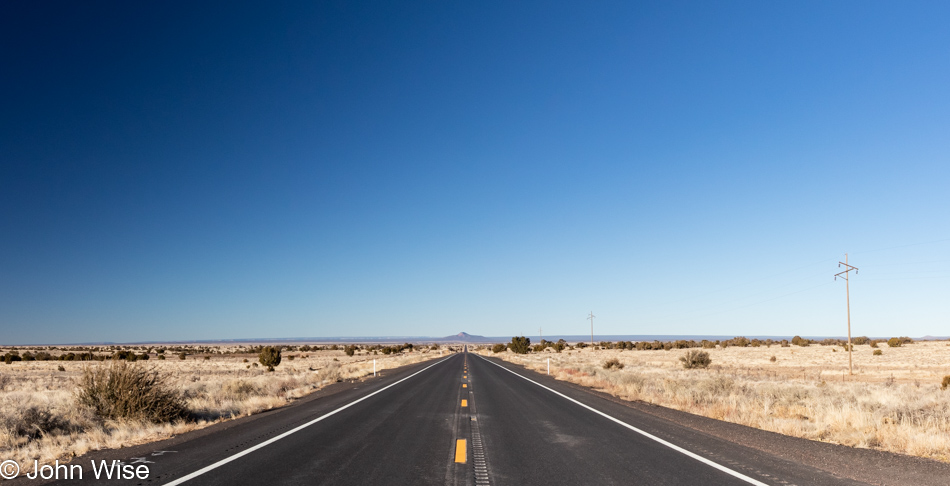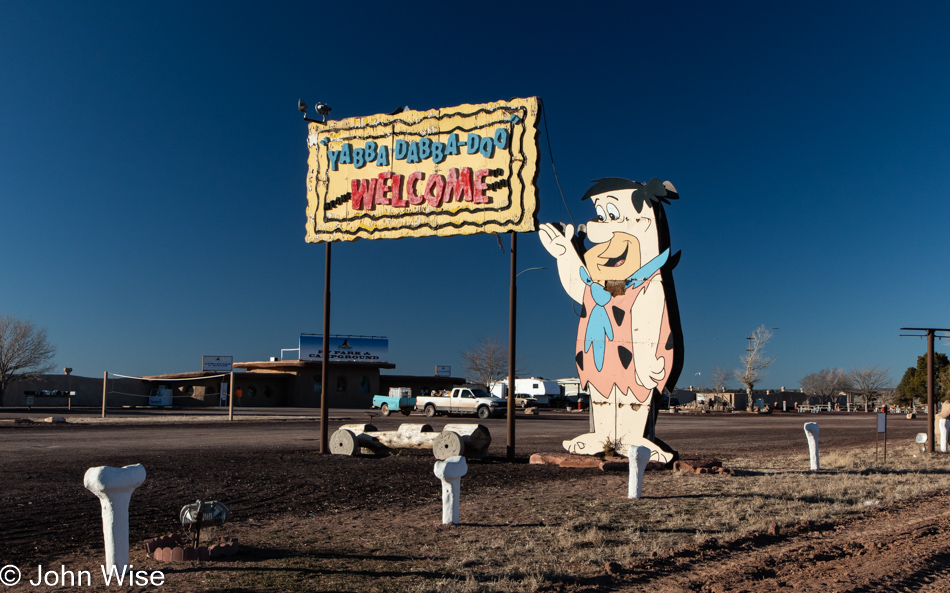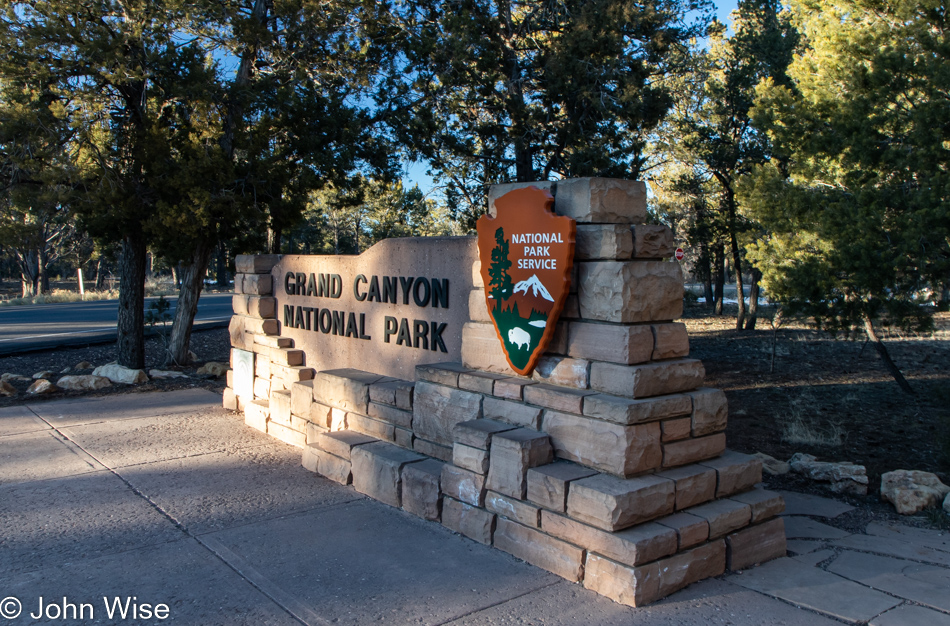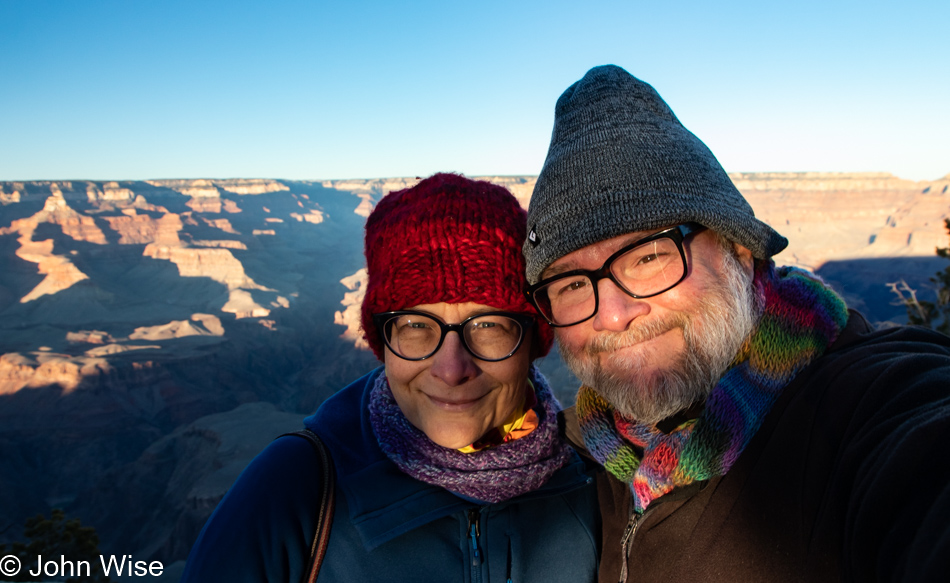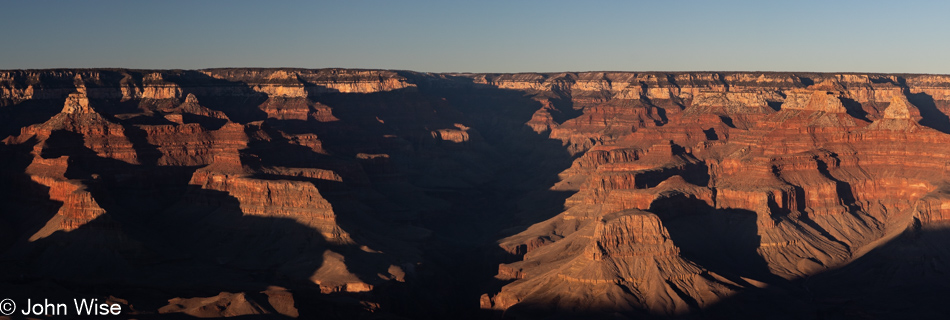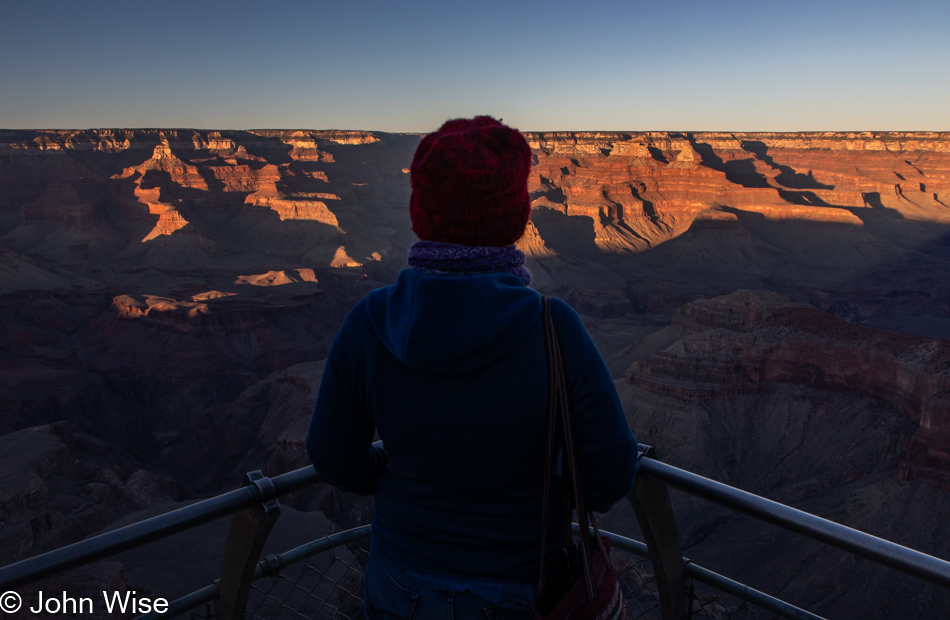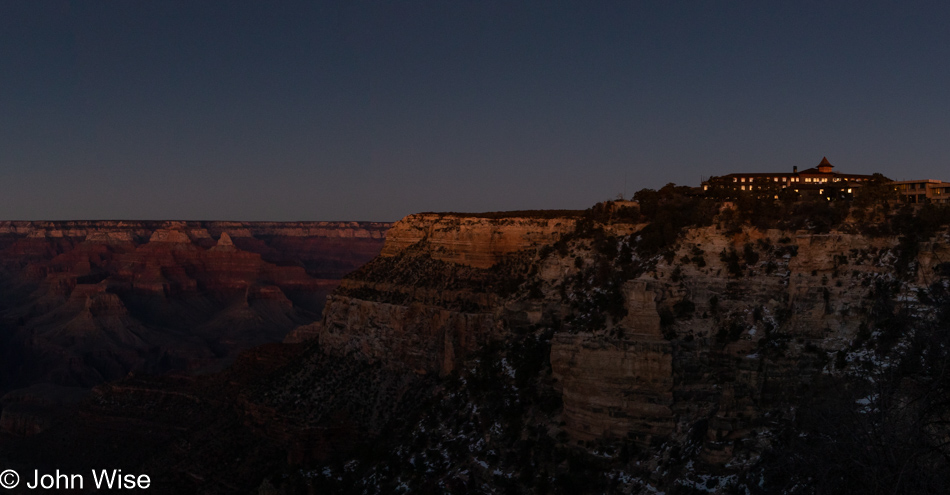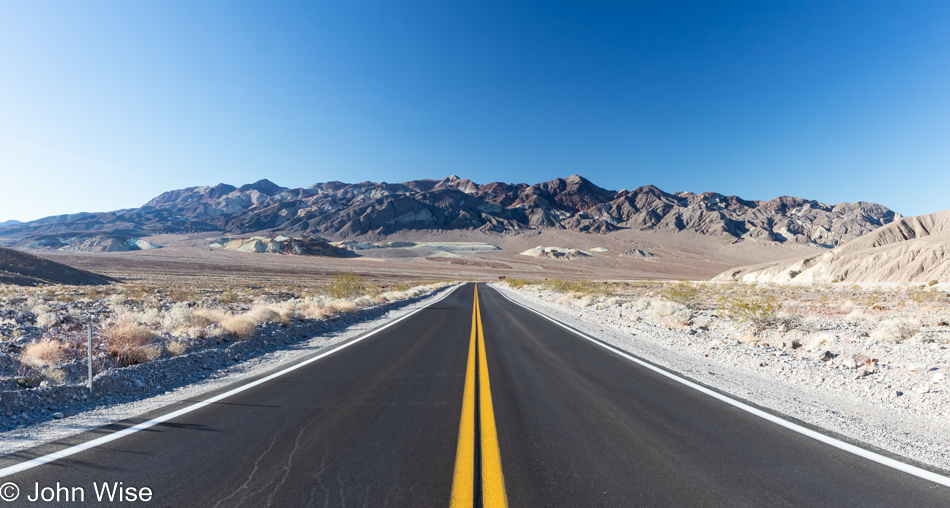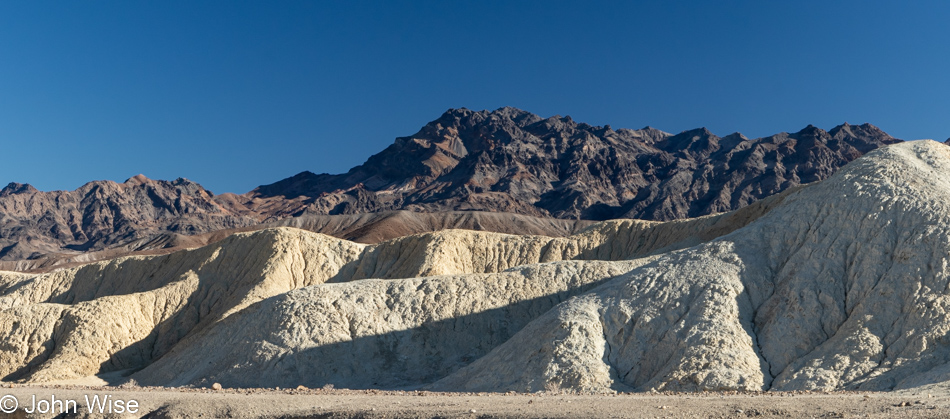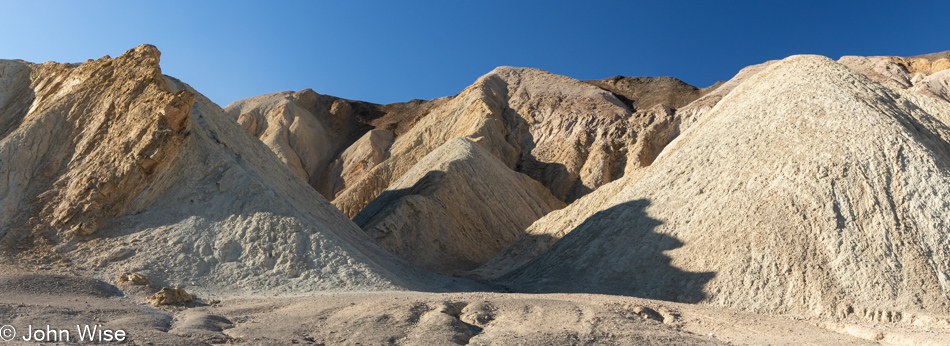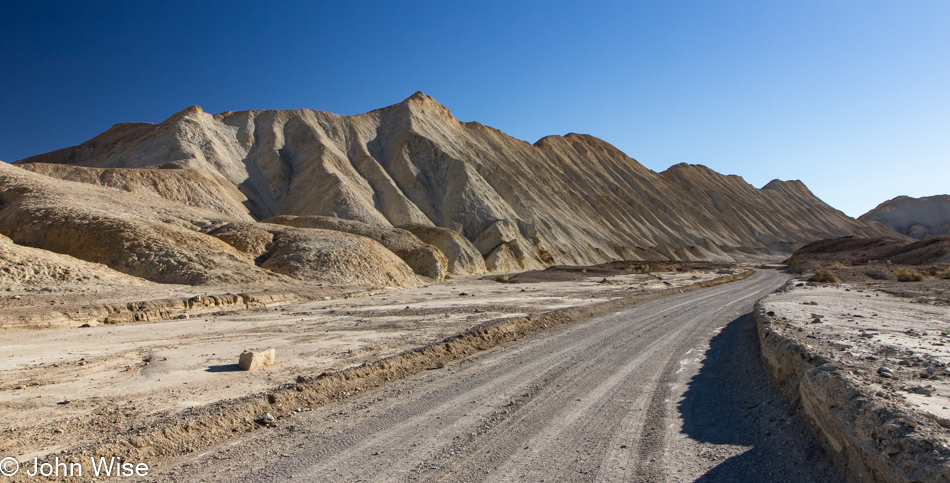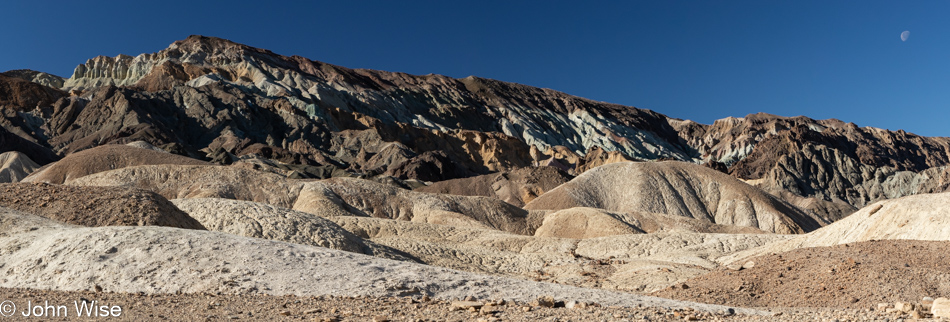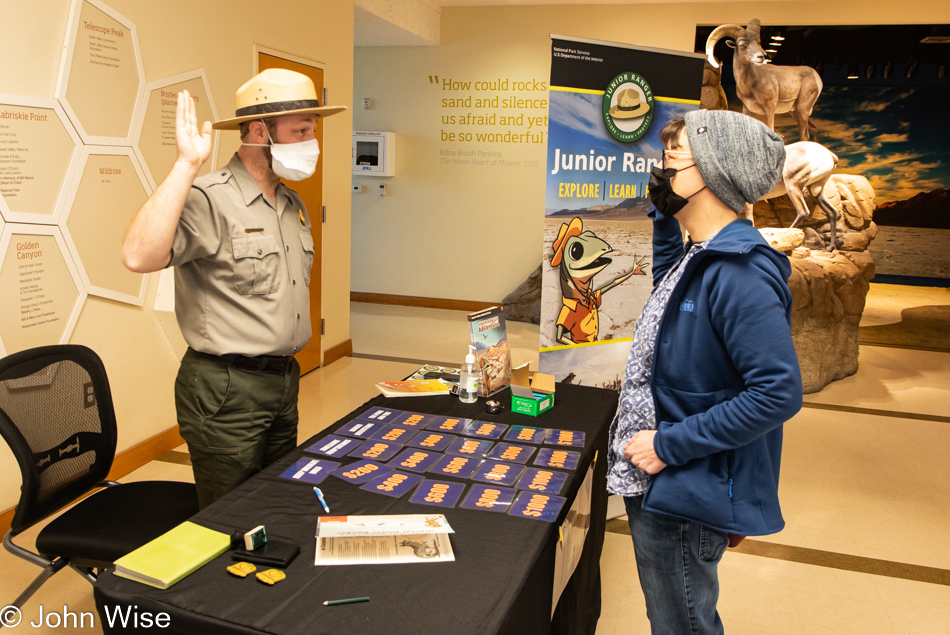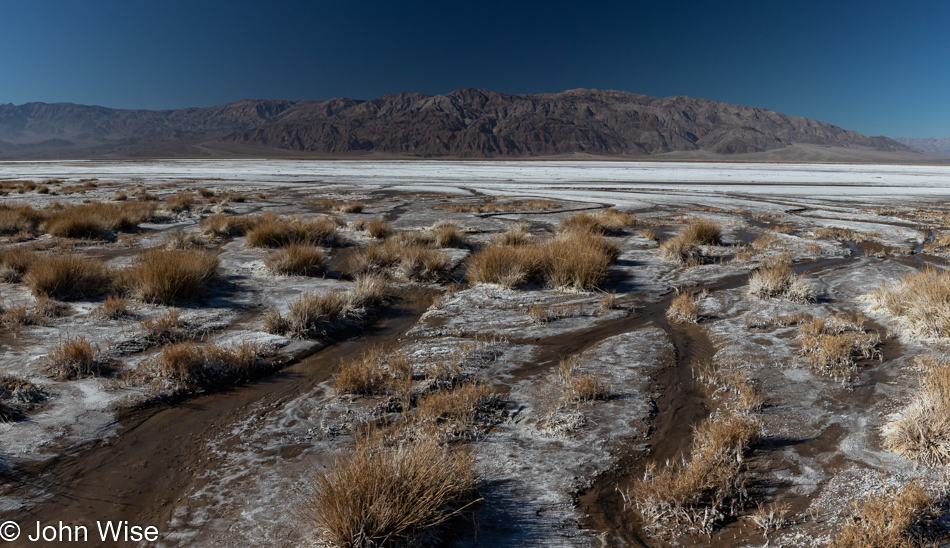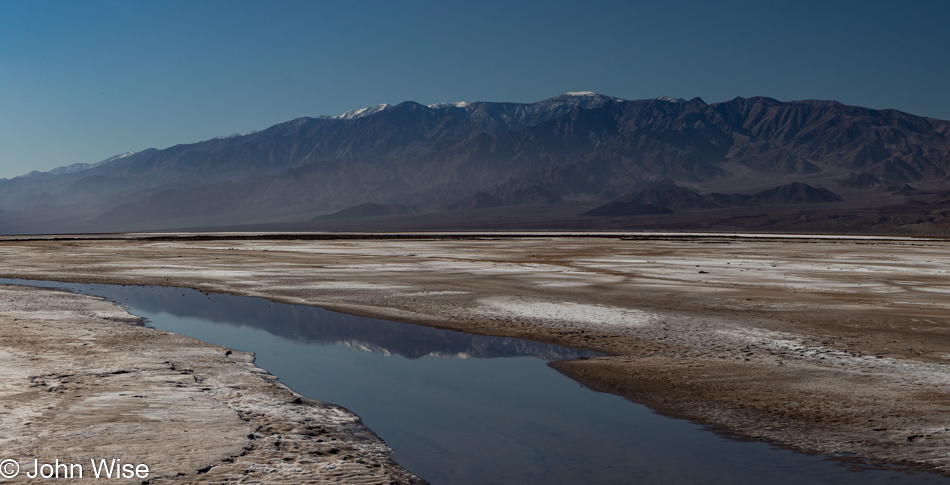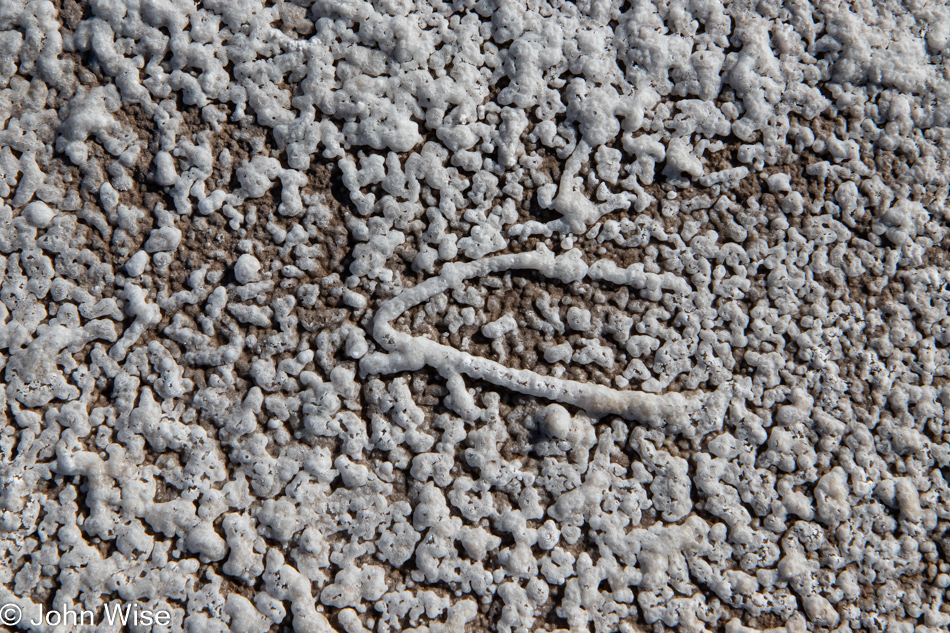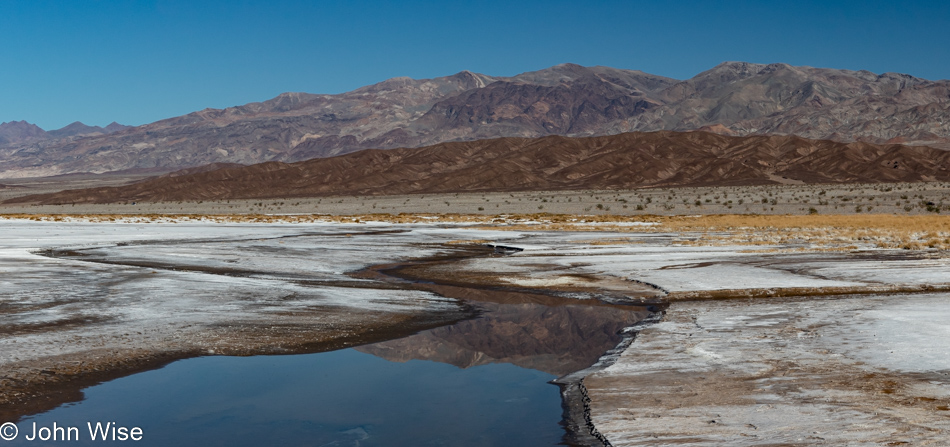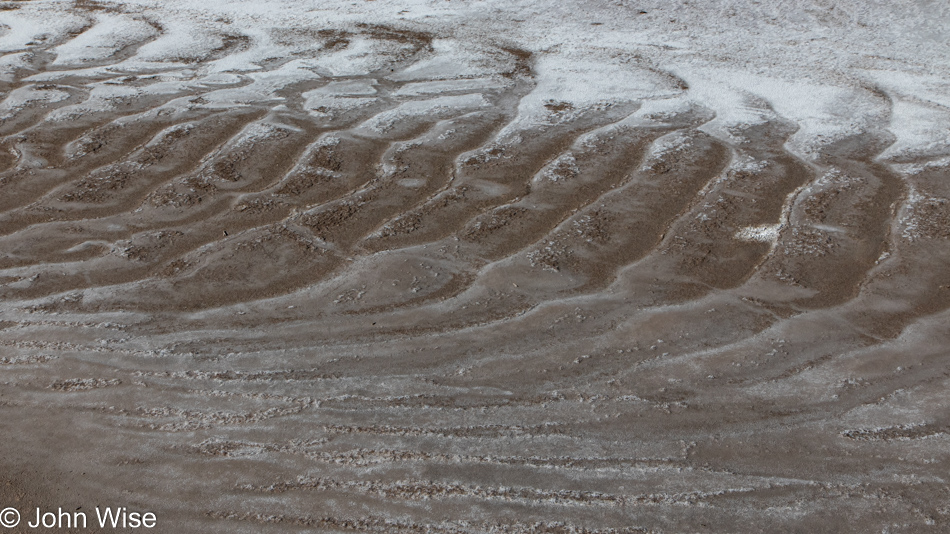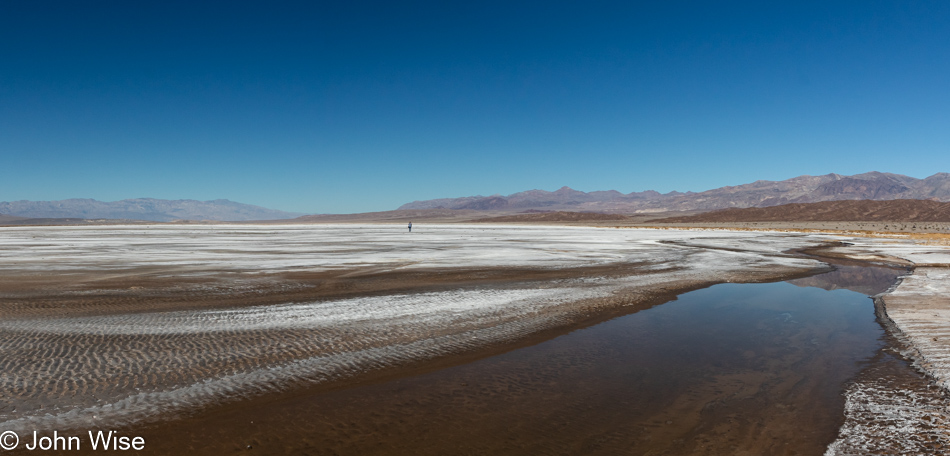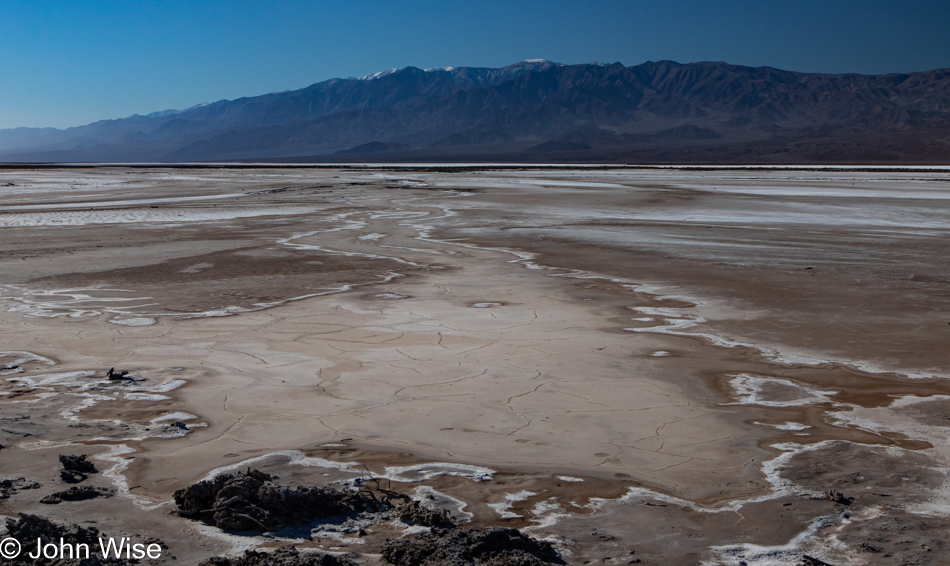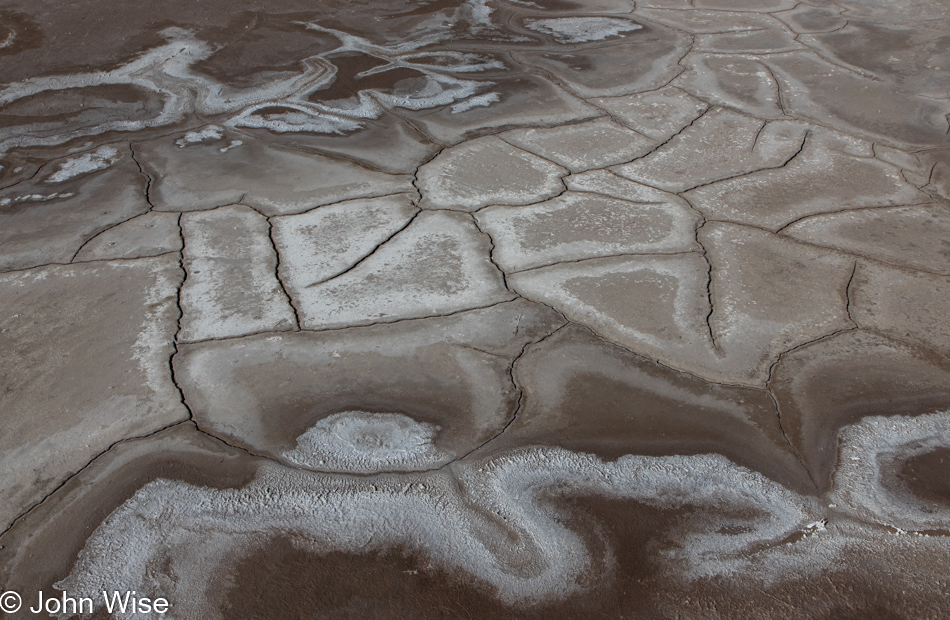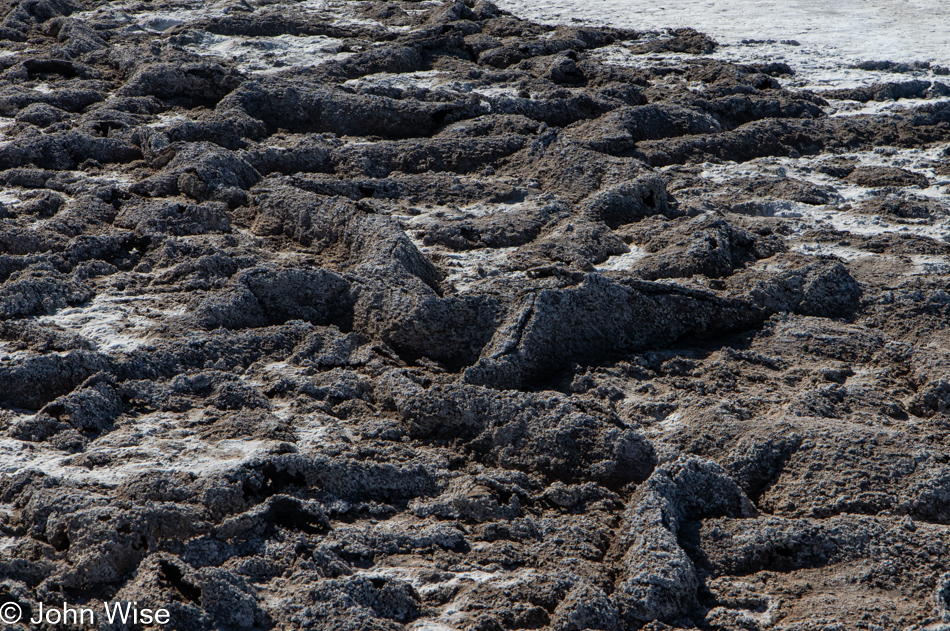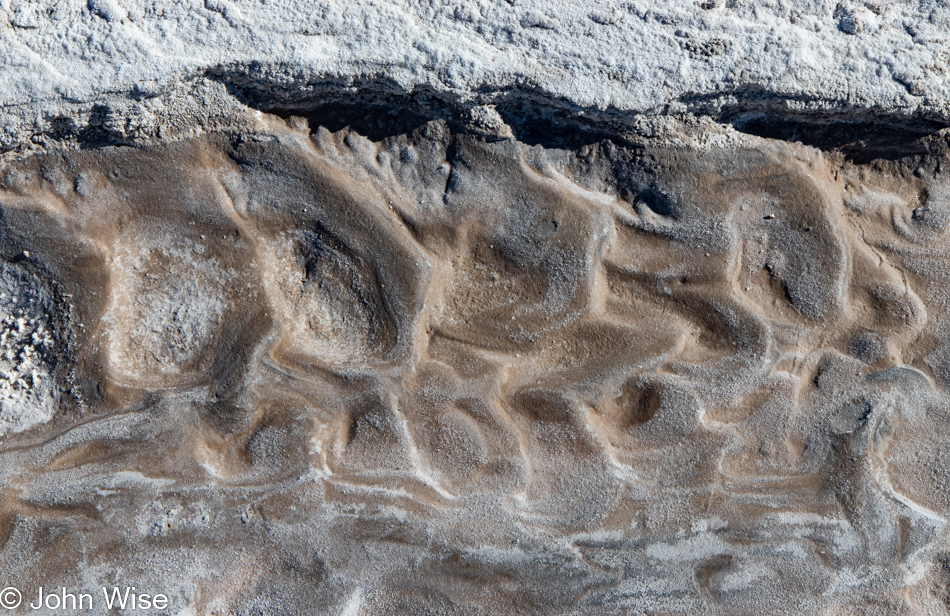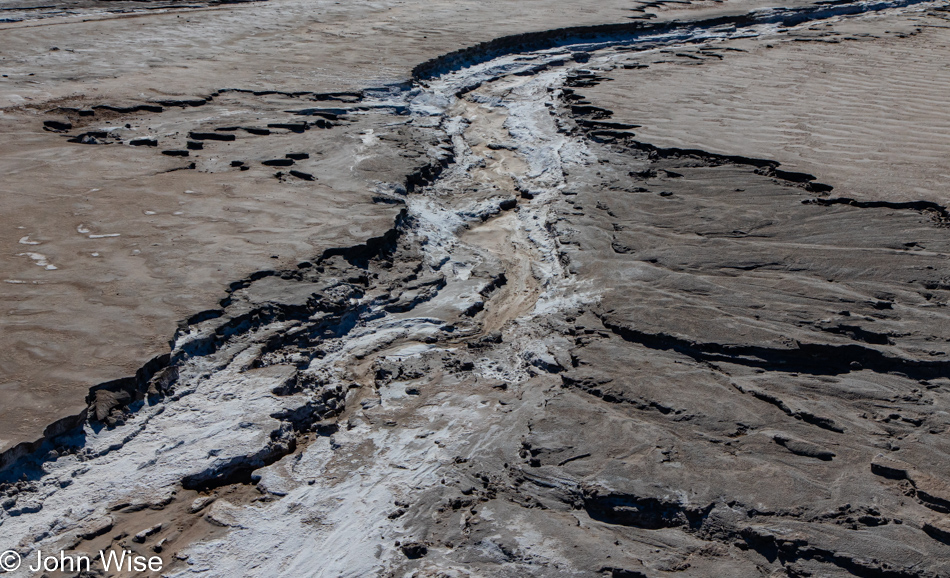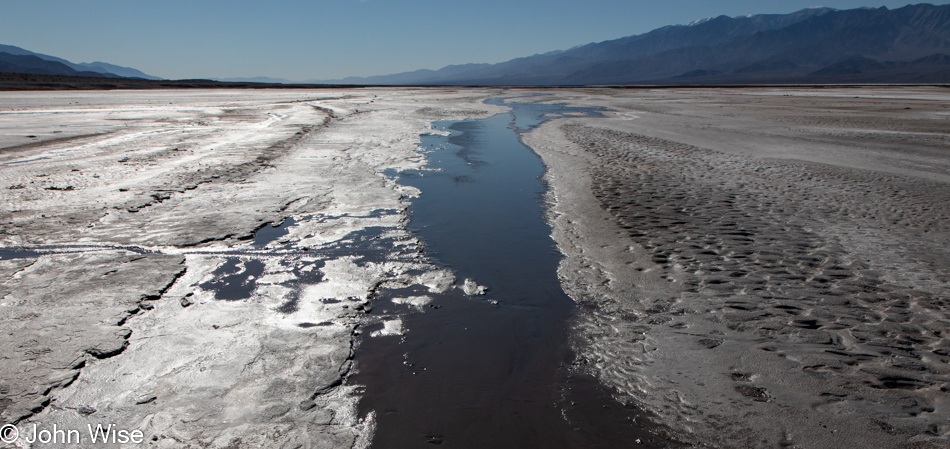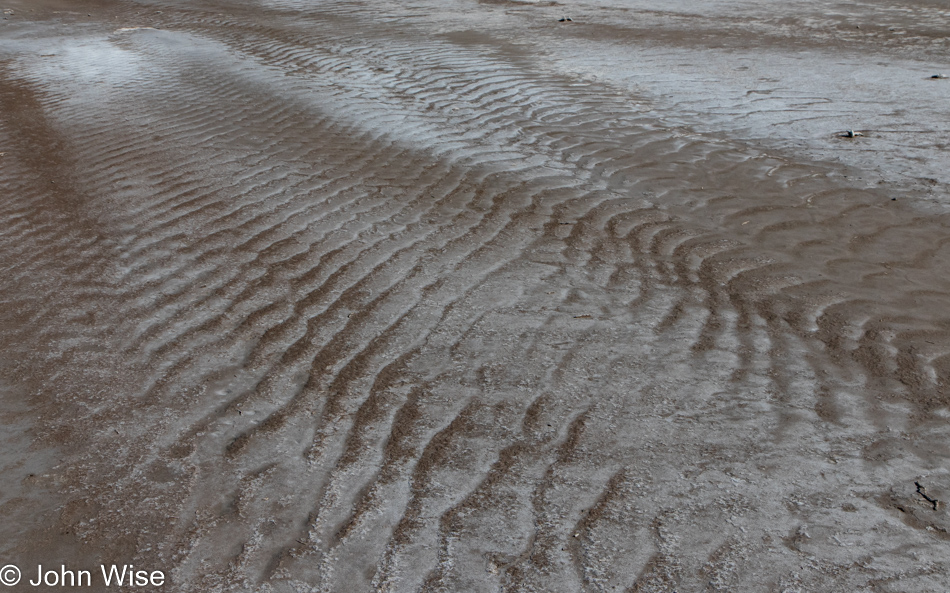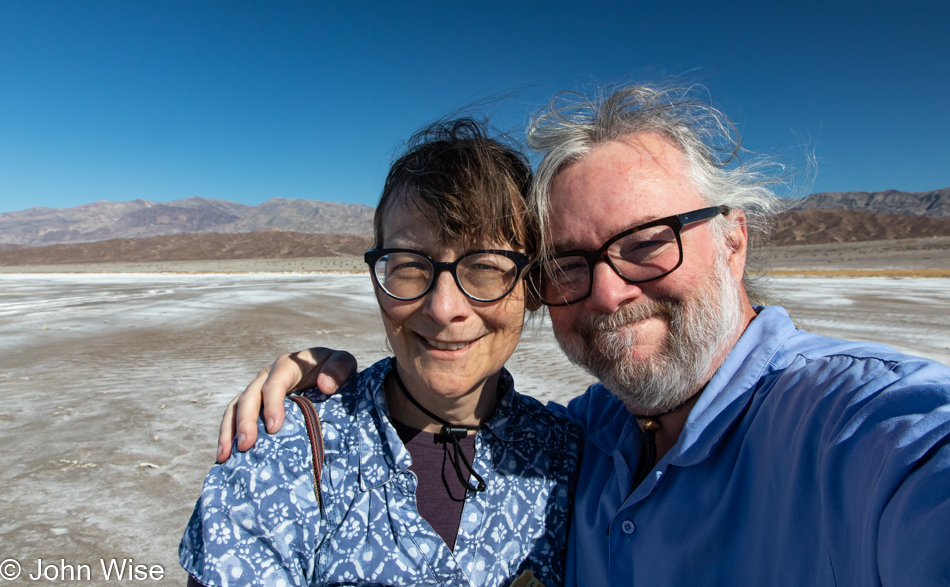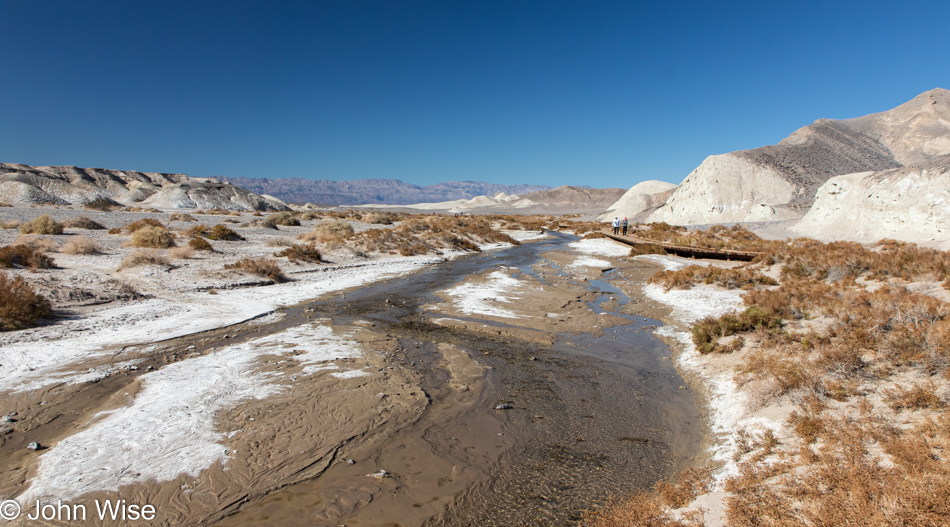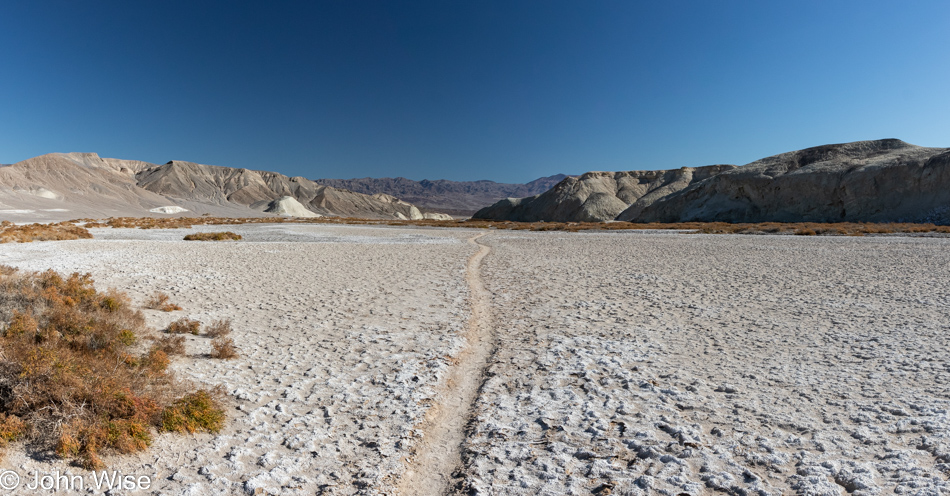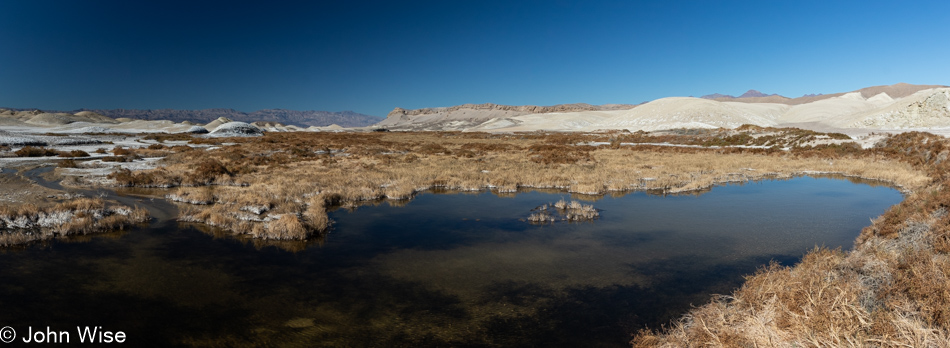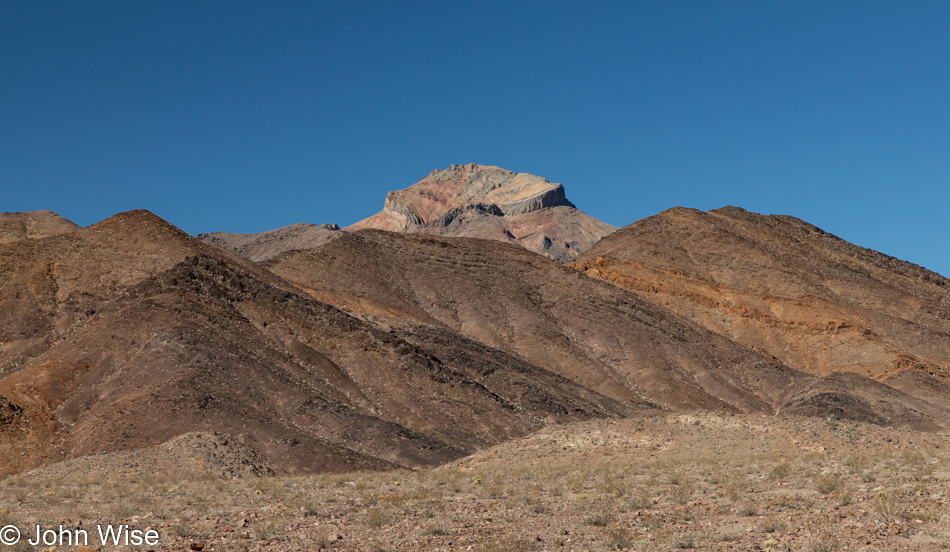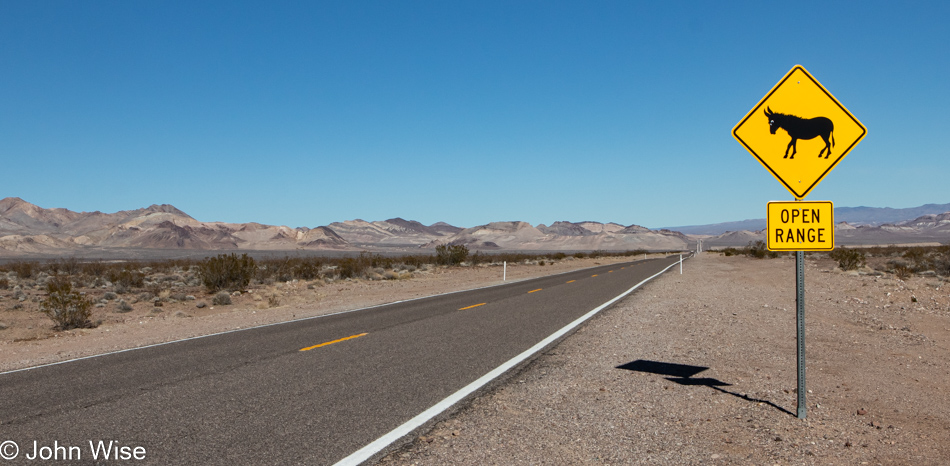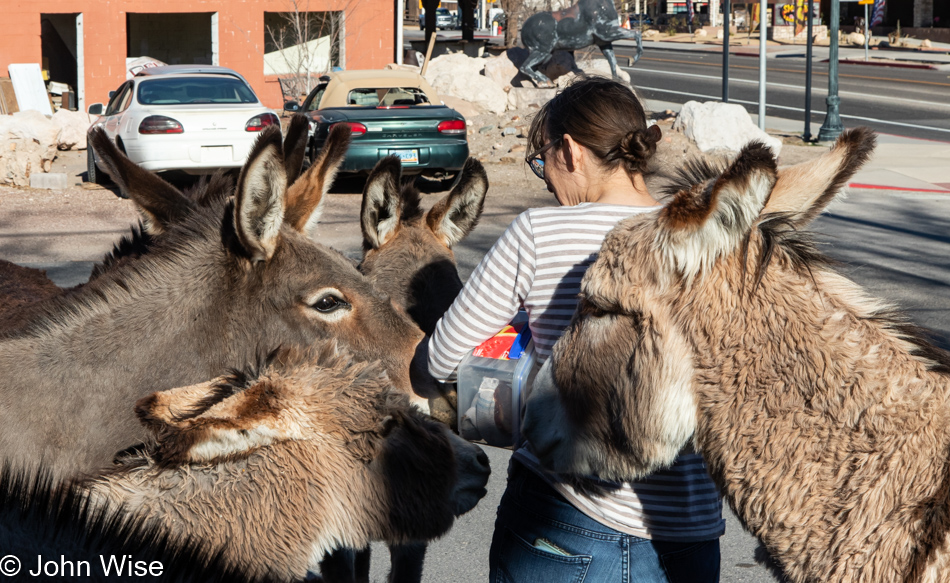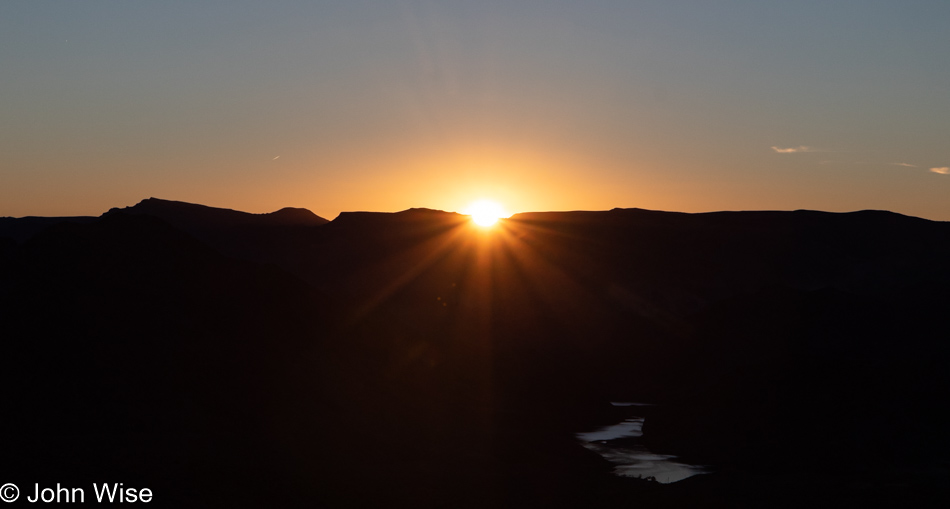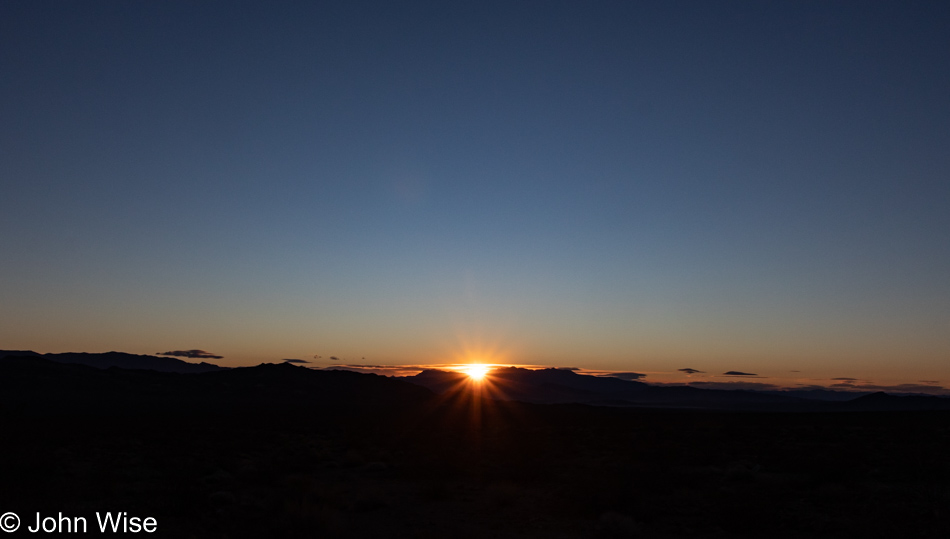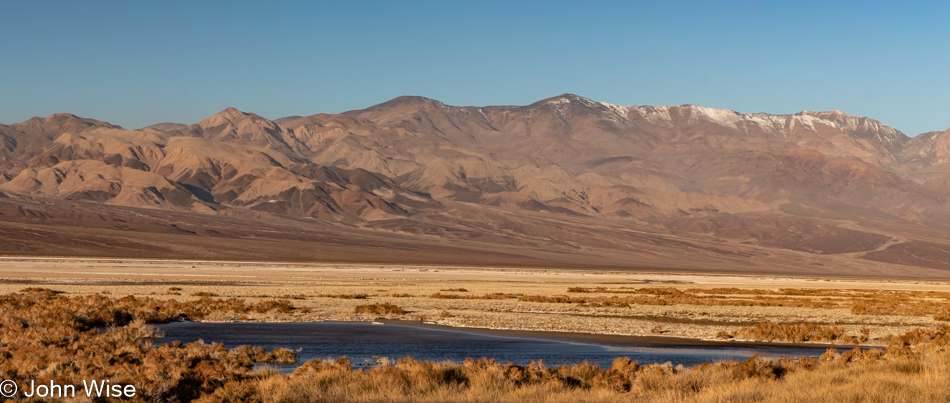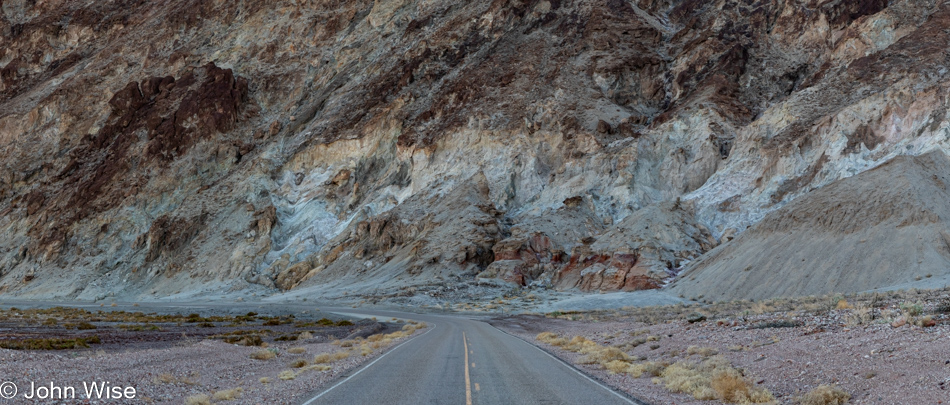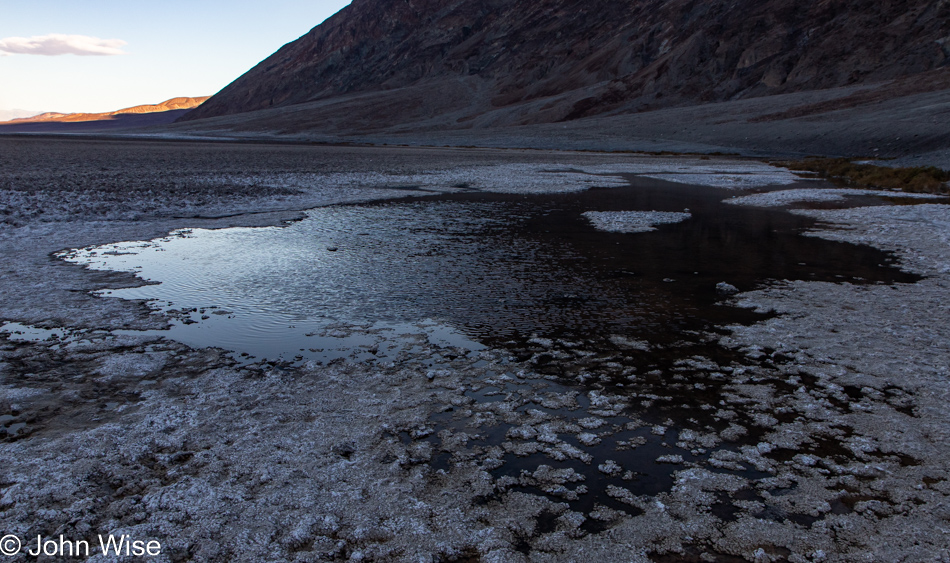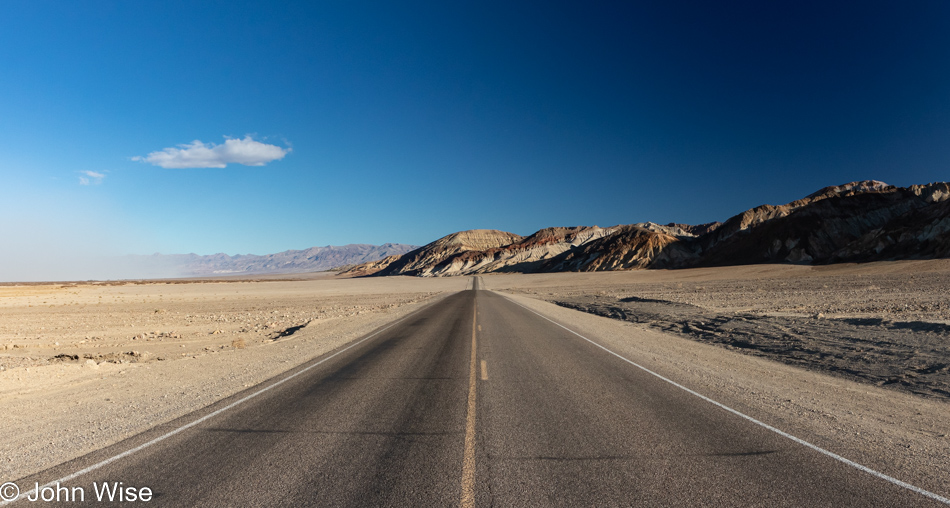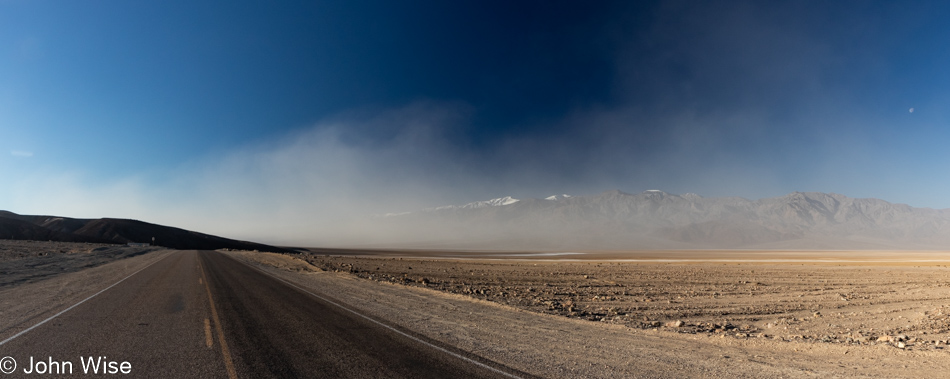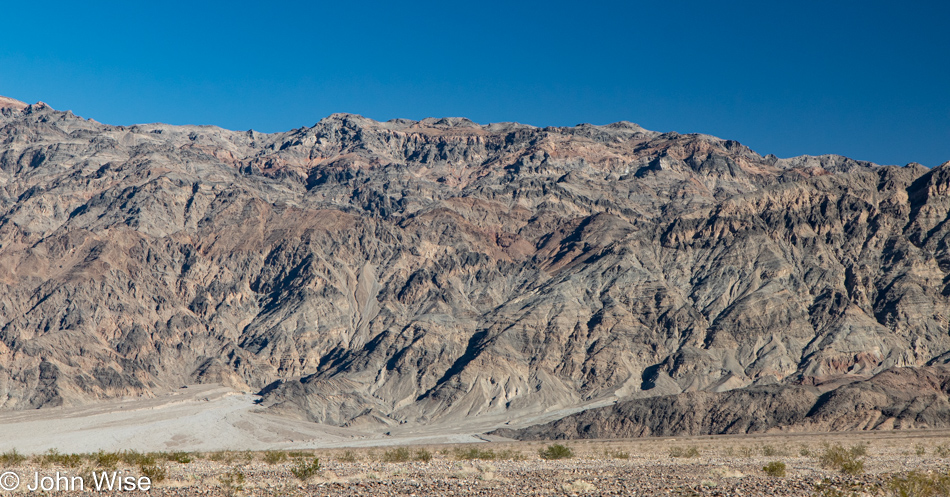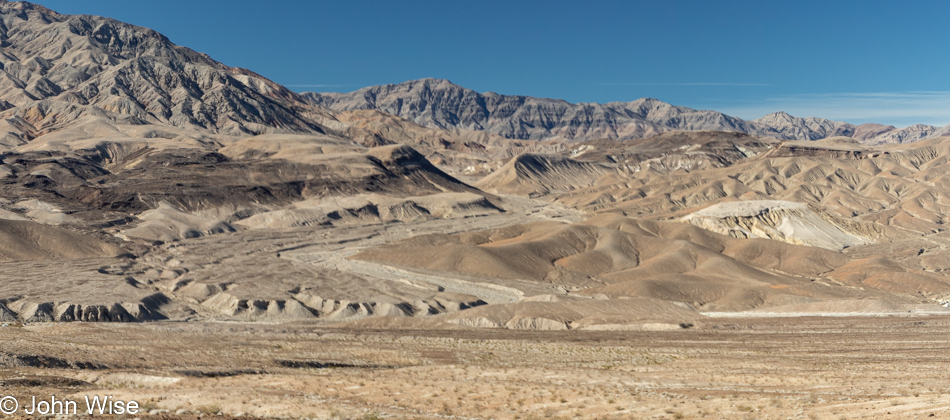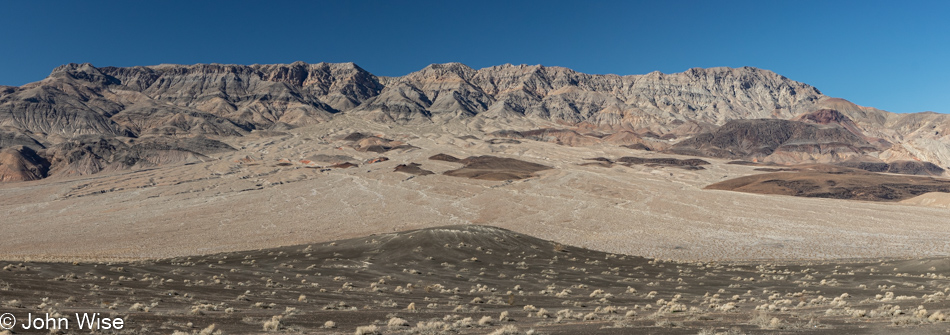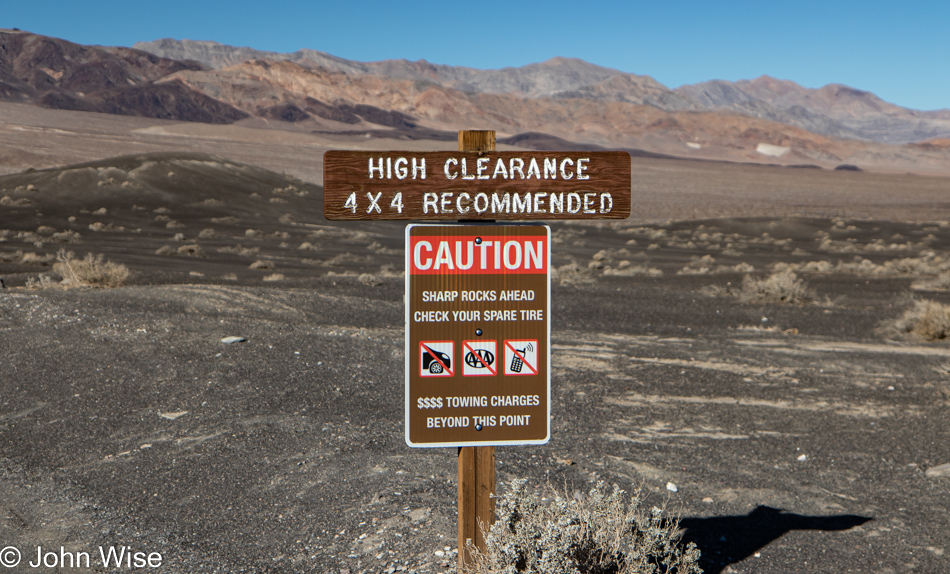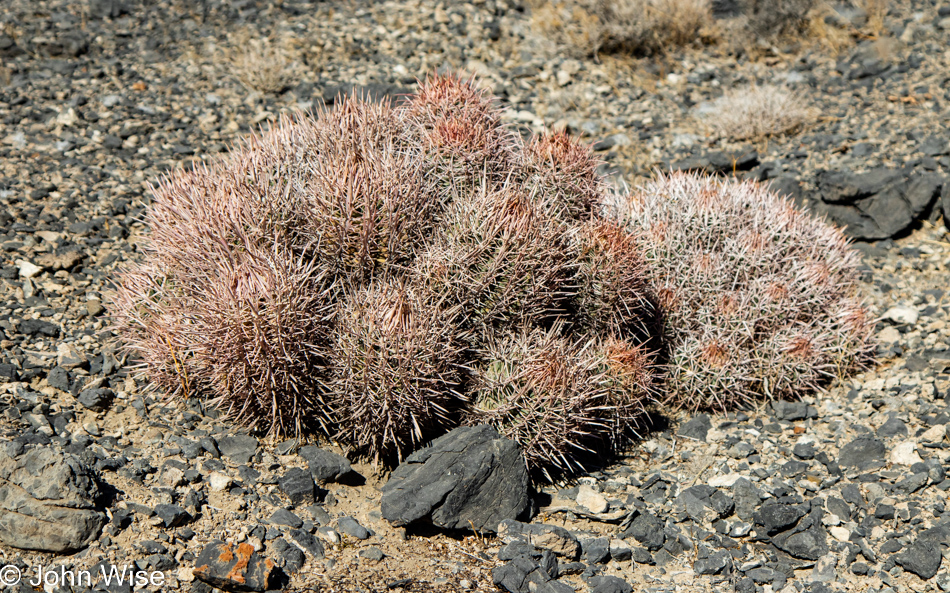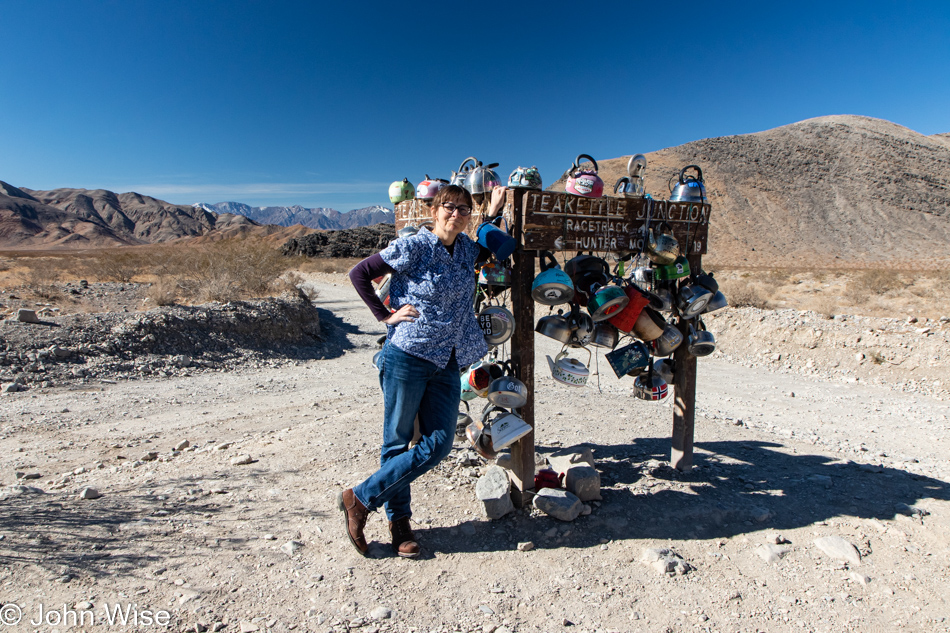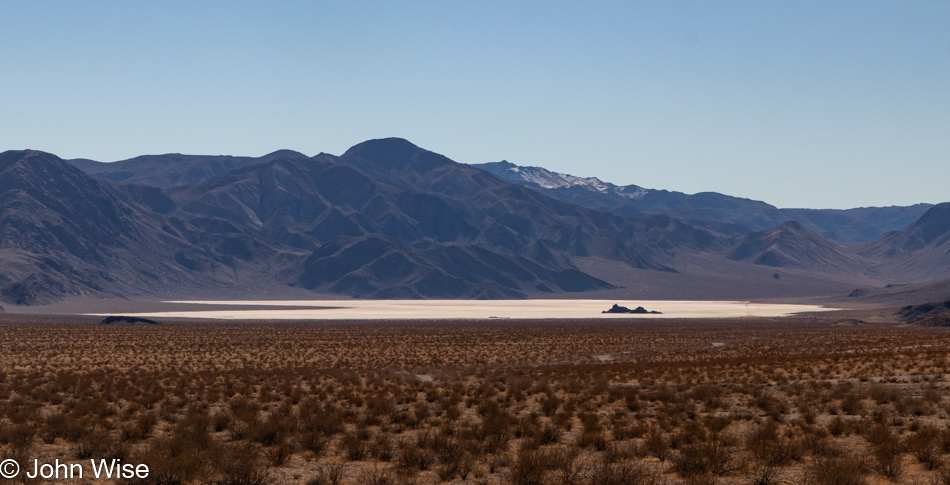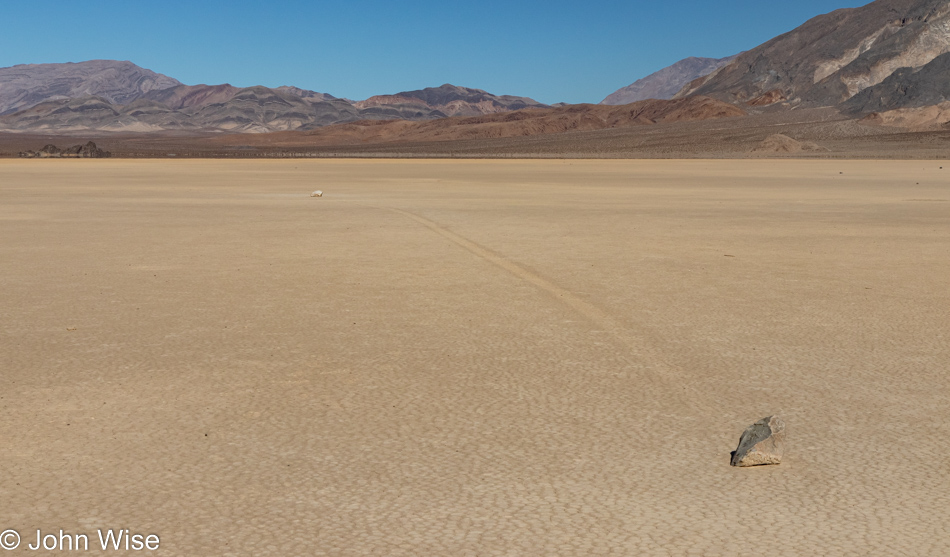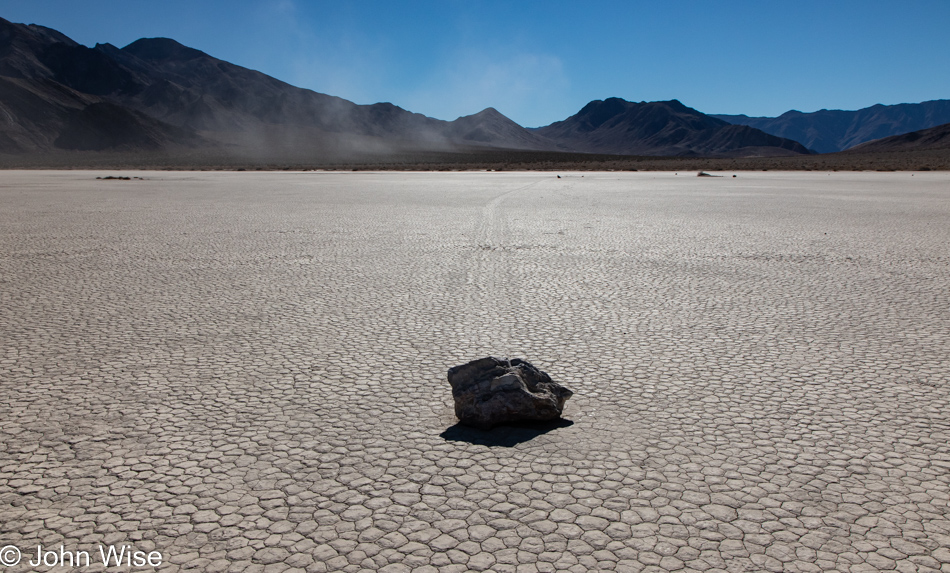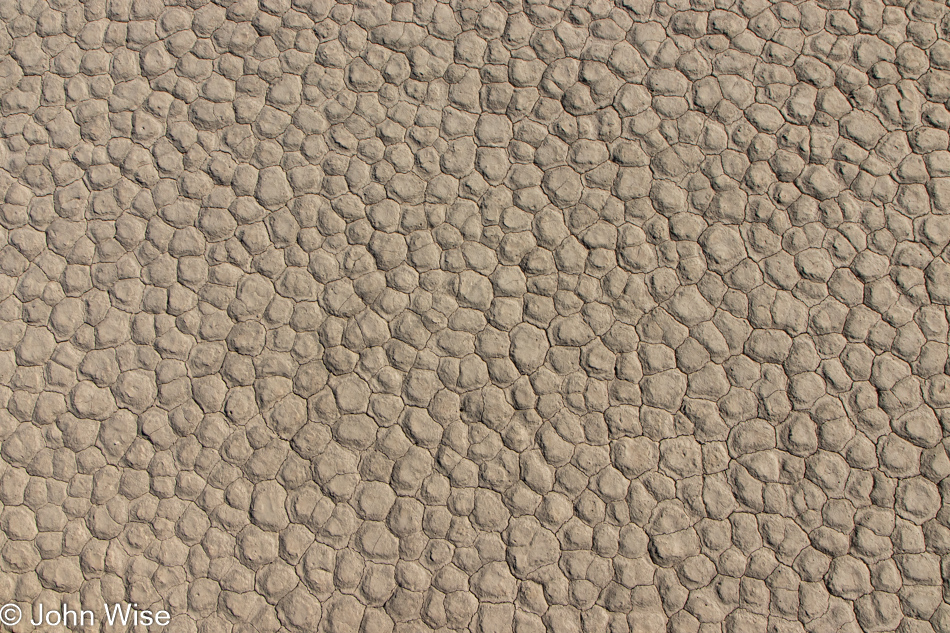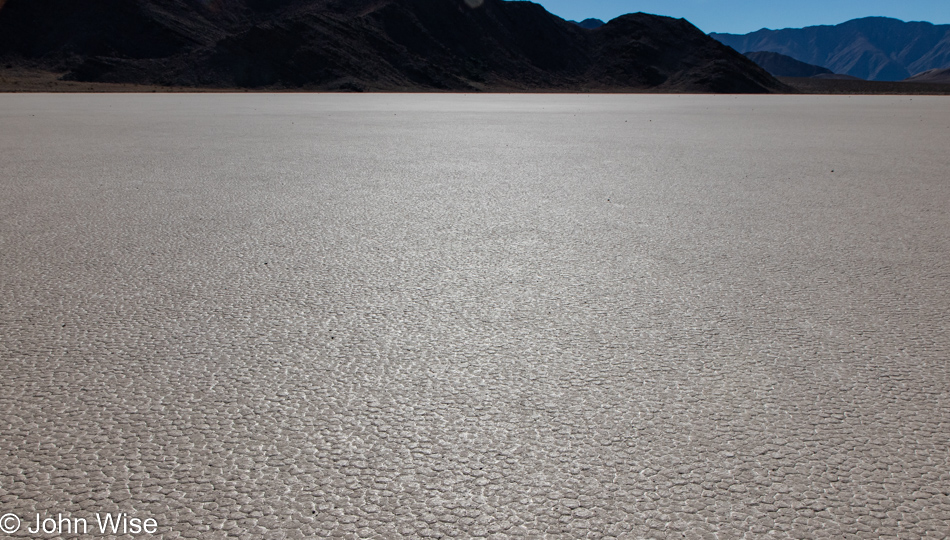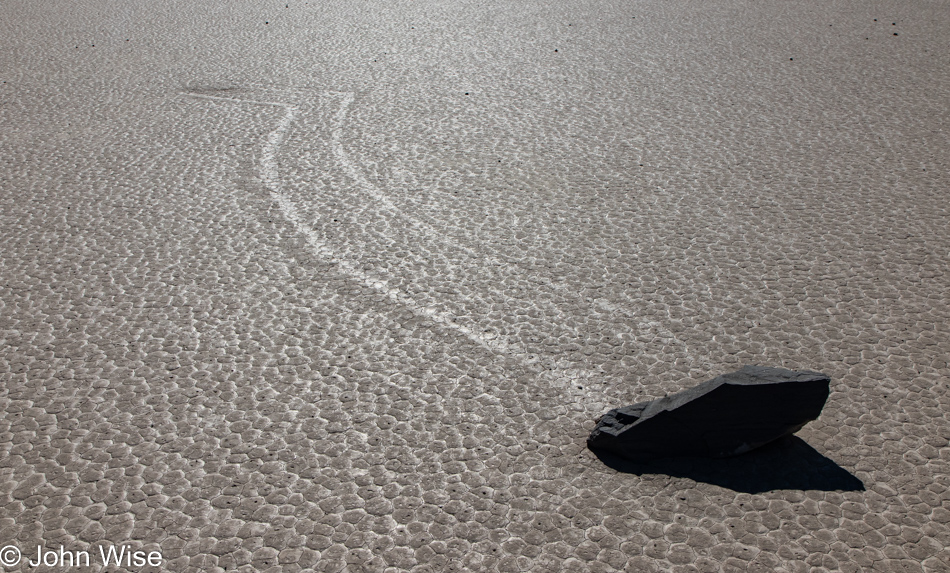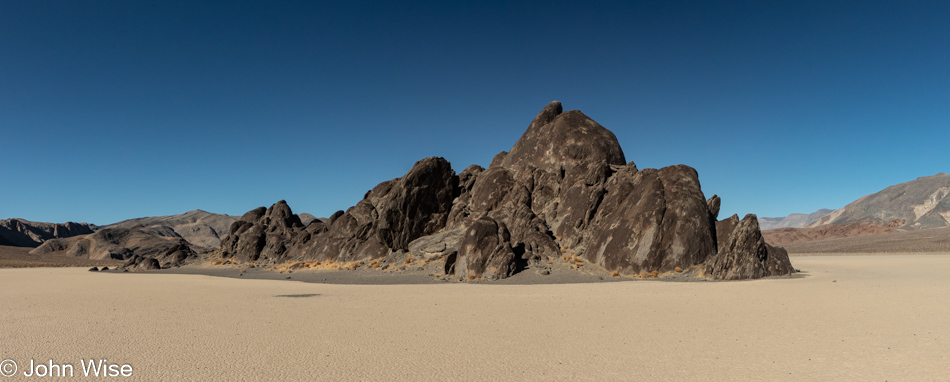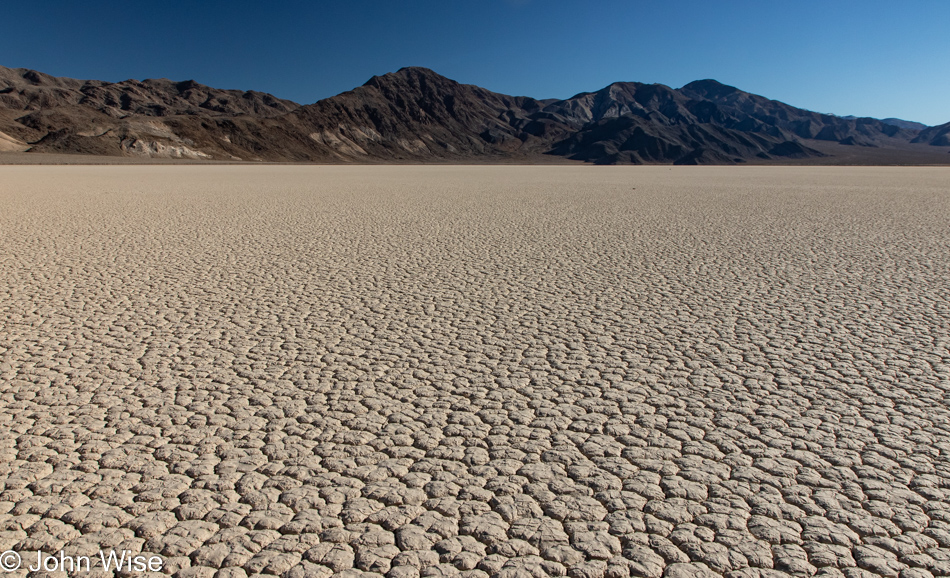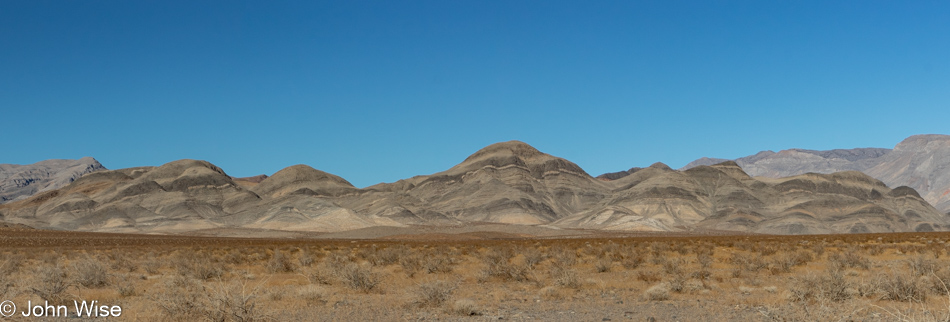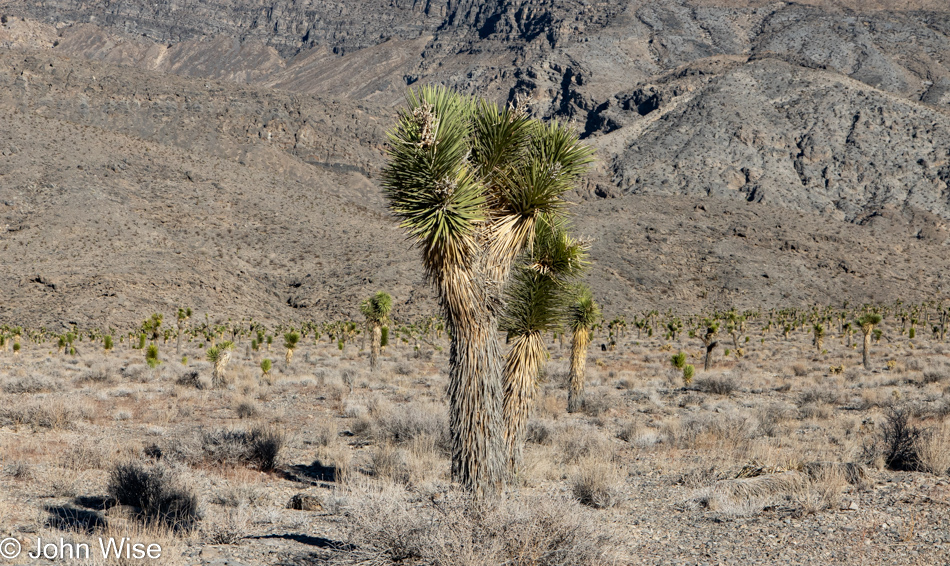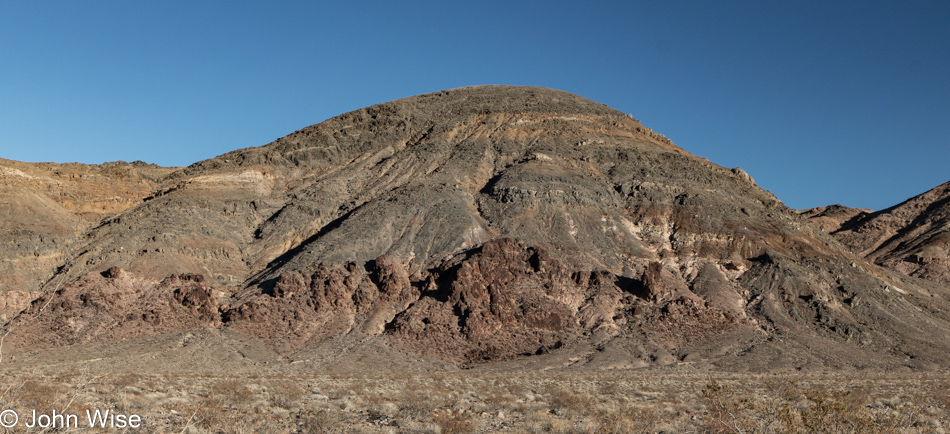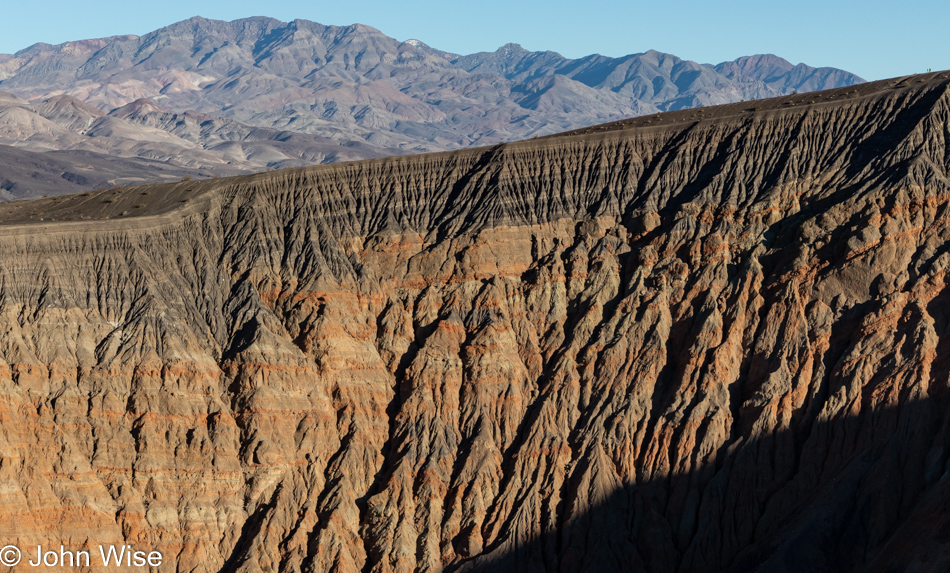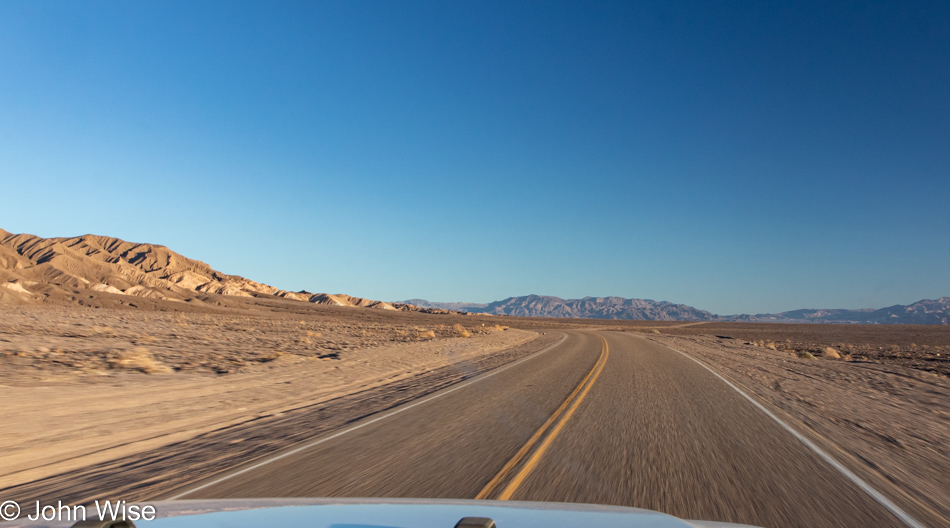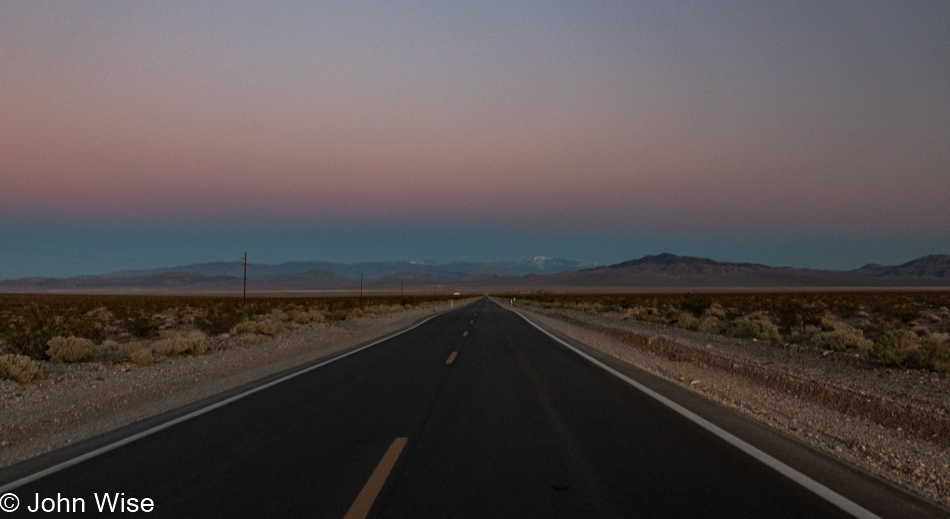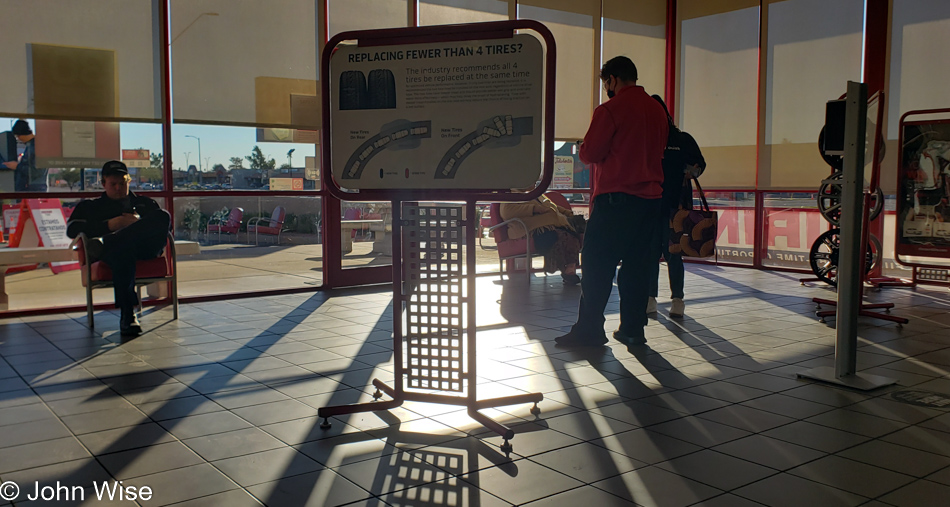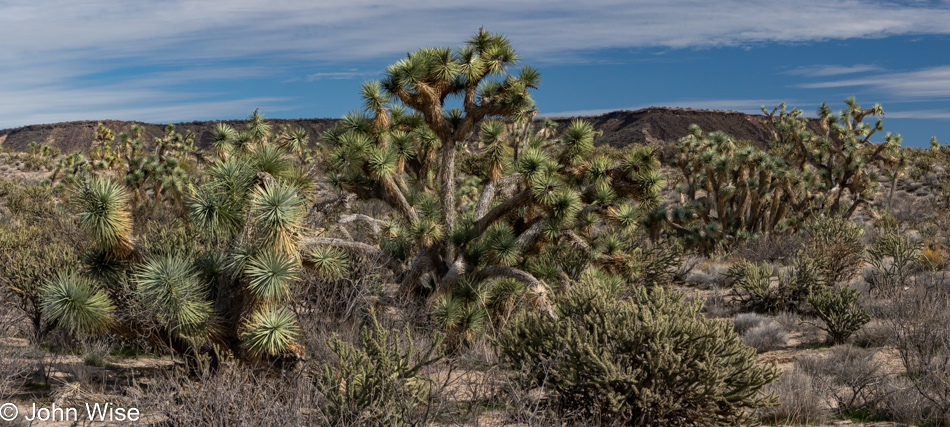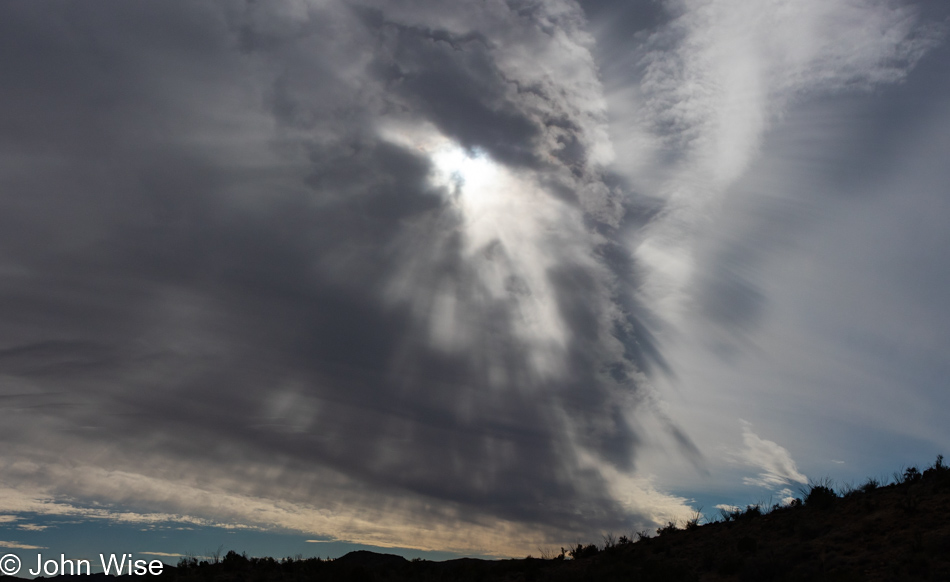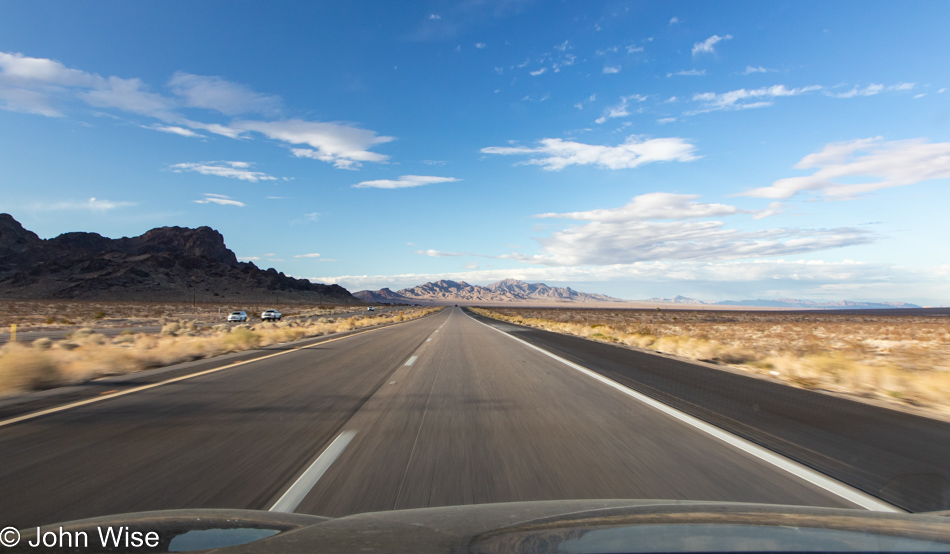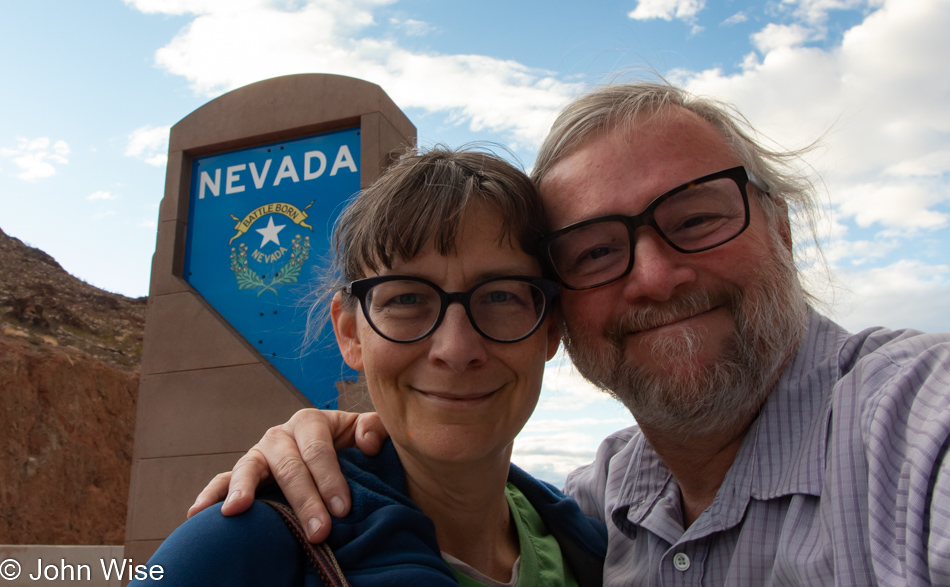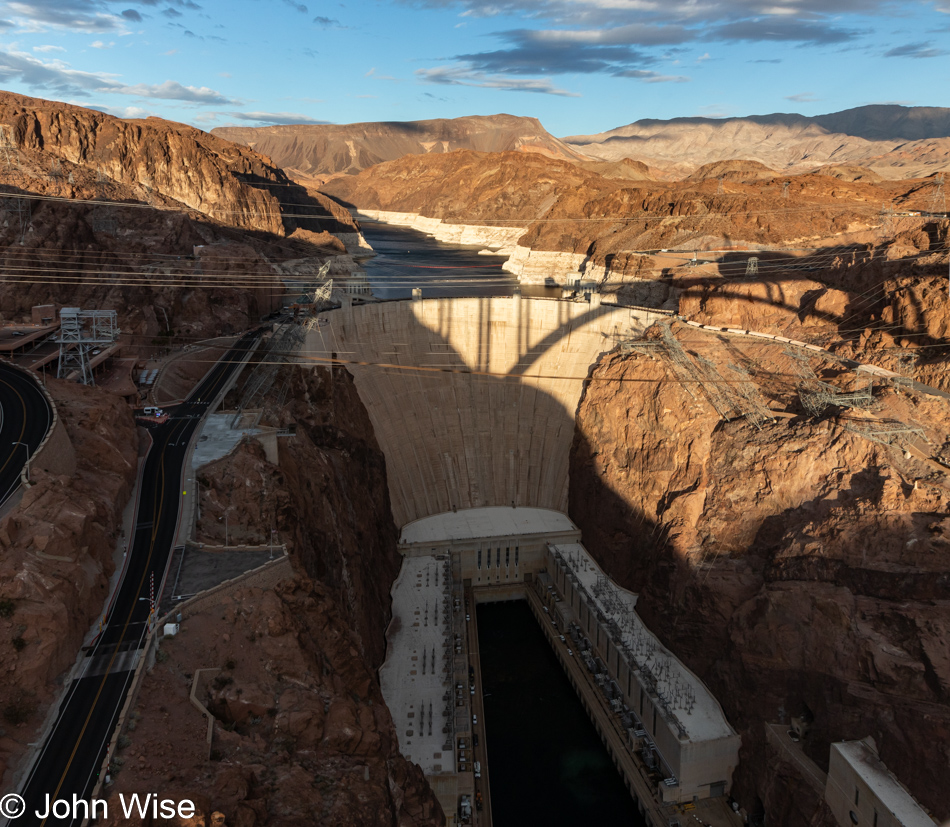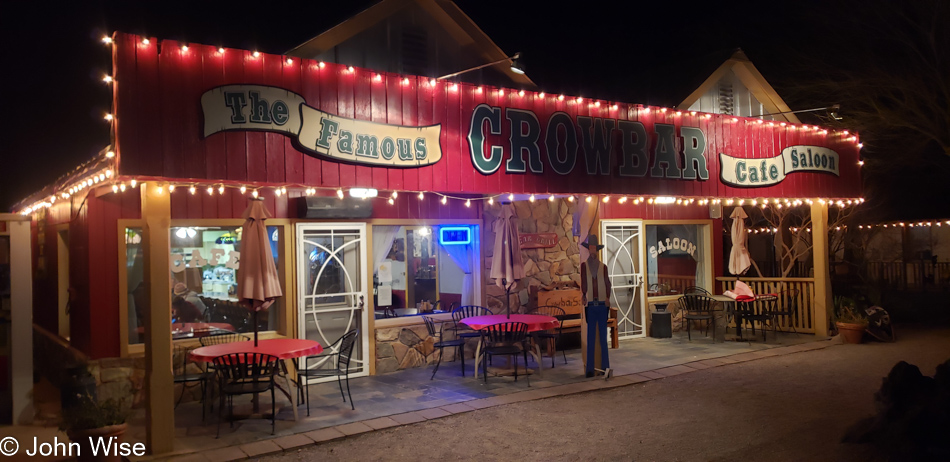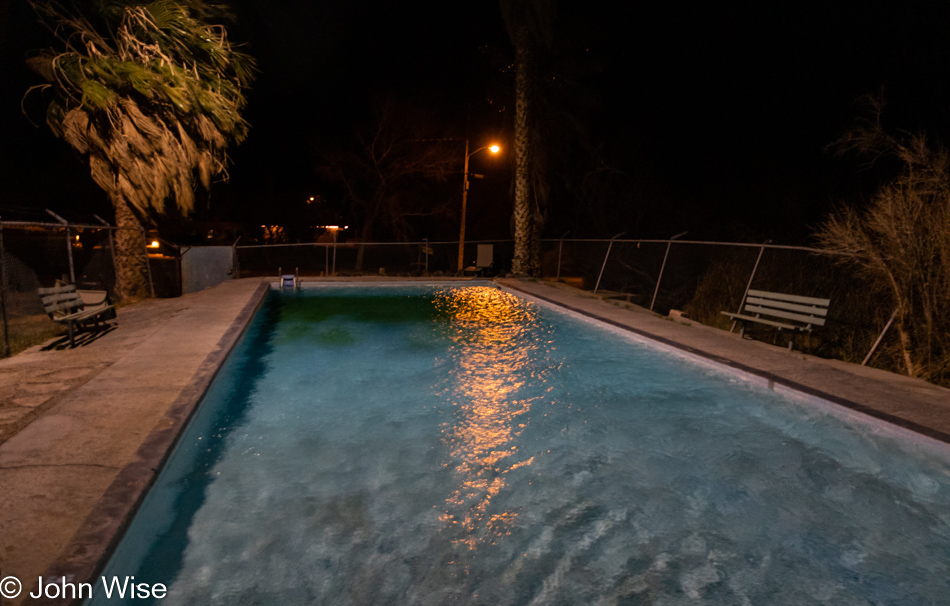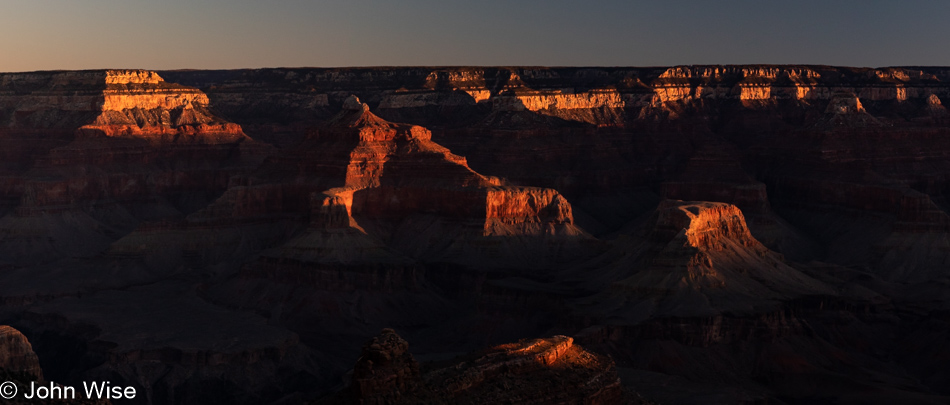
We’ve not seen all the sunrises that have ever risen over the Grand Canyon, but we’ve seen every one of them we’ve been present for, and that’s probably more than either of us might have ever expected had we imagined such a thing after our first visit here together. The thought strikes me that we might only be here at the edge a couple of times this year when these first rays of light reawaken the spectacle of this treasure, and while that will be infinitely more than the fraction of less than .01% of humans that will even visit the canyon and even less than that who will wake up here. While we are certainly in a fortunate minority of humanity as measured by those who will greet the first light of day from within a national park, it feels like there’s room for more. Maybe we can…I was going to write, “…add another day this year,” but before I could jot those characters down on my keyboard, I went ahead and looked for availability on the North Rim of the Grand Canyon, and there, on the last day of the season, found a cabin that had “Book Me!” written all over it. I obeyed.

Of course, breakfast would be had at El Tovar, the home of Belgian hot chocolate, and as far as the Grand Canyon (and maybe all of Arizona), this is the only place to indulge in such a treat. We’ve been lucky enough to spend more than a few days in this famed hotel at the precipice of the canyon, but rooms are now hard to come by and have grown in expense. Rightfully so, considering the likely enormous upkeep of such a historic structure. So, while we may not want to spend so much of our budget on lodging, that doesn’t mean that we won’t attempt to eat every meal we can here.
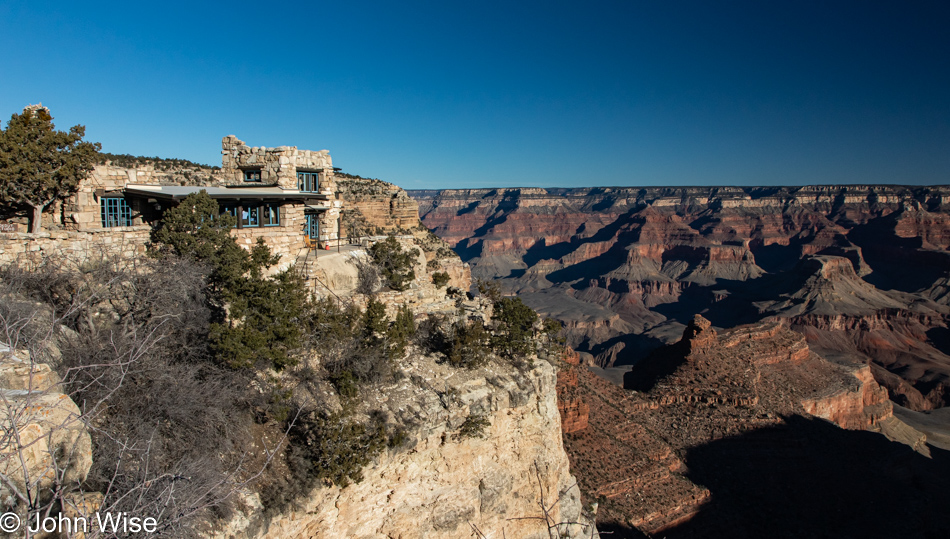
From Grand Canyon Village, we head west on foot in the direction of Hermit’s Rest, though the likelihood of getting that far is slim at best. Who cares? We’ll just walk out on that rim trail as far as time allows.
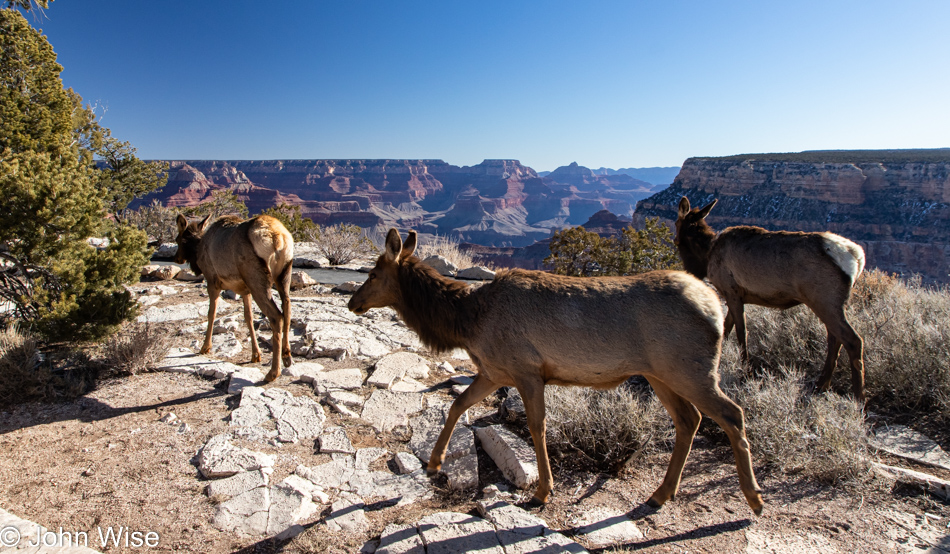
About a dozen elk were also heading in our direction, though their stopping to forage meant we were moving a bit faster. While they appeared nervous about us, we were equally nervous about them as they have a big weight advantage over us puny humans. Be that as it may, it is amazing to be in close proximity to such graceful wild animals that appear to daintily nibble at things and walk with a light gait.
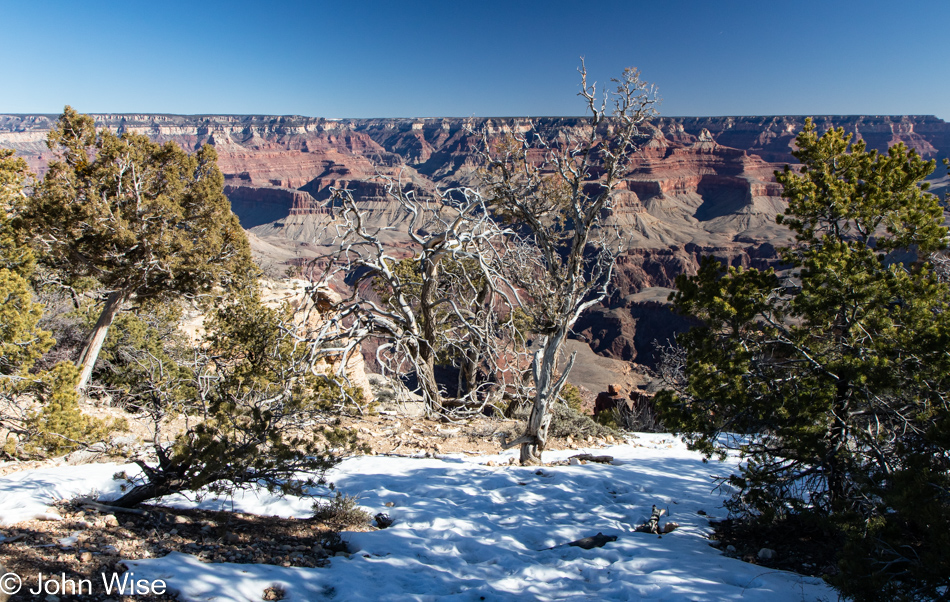
There were light patches of snow still present, though much of the white stuff had iced over. Speaking of ice, there are smatterings of that in shady spots in the Village as well as on the trail. Prior to choosing the rim trail, we’d already read that most entries into the canyon were loaded with enough ice to require crampons and walking sticks just to be safe, and we had brought neither.
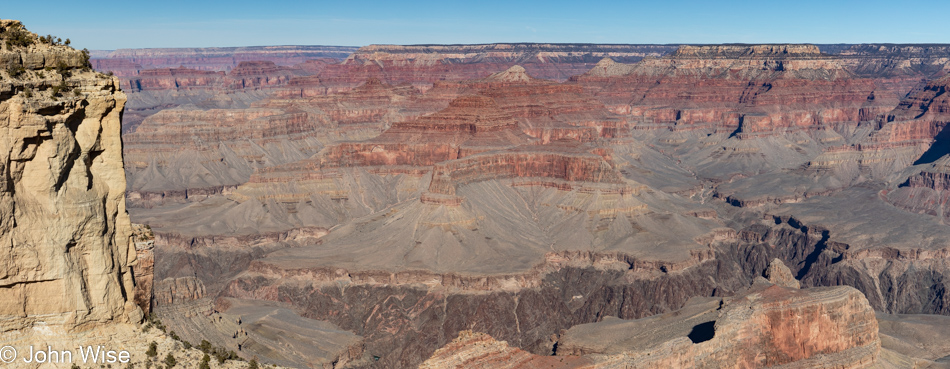
We did bring wide-open eyes, ready for expansive vistas that we’d calculated would communicate directly with our memories and imaginations to remind and inspire us that what we thought we knew would appear new and unique. Searching those previous experiences, we couldn’t find a hint that we’d ever walked this trail as far as we are now, but even if we had, could that familiarity possibly diminish something that looks like this?

Right down there in the black rocks known as Vishnu Schist, a.k.a. the Basement, lies the river called Colorado, which is a place we have very minor experience with. Over ten years ago, as I’ve probably shared a thousand times by now, Caroline and I were aboard dories right down exactly there. We were on Day 7 of our journey and had woken up at river mile 84.6 above Clear Creek. We’d run a couple of rapids, one called Zoroaster, that was quite large, before taking out at mile 88.1 for a walk to Phantom Ranch. After an hour or two along Bright Angel Creek, visiting a gift shop, and visiting the first flush toilets in a week, we were again riverside where we’d have lunch before passing right through here to our next camp that was only 6 miles downriver.
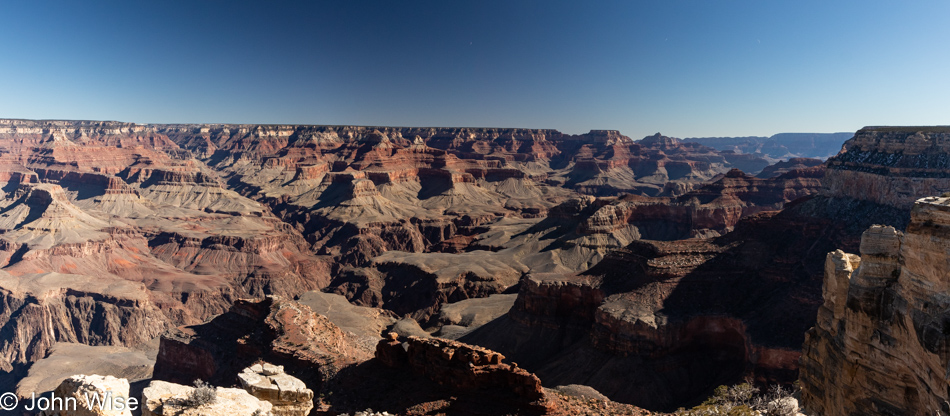
The view from here is one of expanse and the immense flow of time. The gargantuan landscape stretches out in all directions; there doesn’t seem to be a beginning or an end. Down in the canyon, the world is ancient, within grasp, and extremely detailed until you try to reach out and experience it. From our perspective on the canyon rim, it feels like you could reach the other side rather quickly, but that’s an illusion, while on the river, there is no outside world. Infinity is nearly within reach of being understood if you’ve been on the Colorado through the Grand Canyon, but it’s an illusion as the North Rim is only about 14 miles away while the South Rim is under 8 miles via the Bright Angel Trail. Not that those distances really mean anything, as the majority of your time on the river, there is no way out other than straight ahead. Of the other trails in and out of the canyon, many are treacherous and difficult.
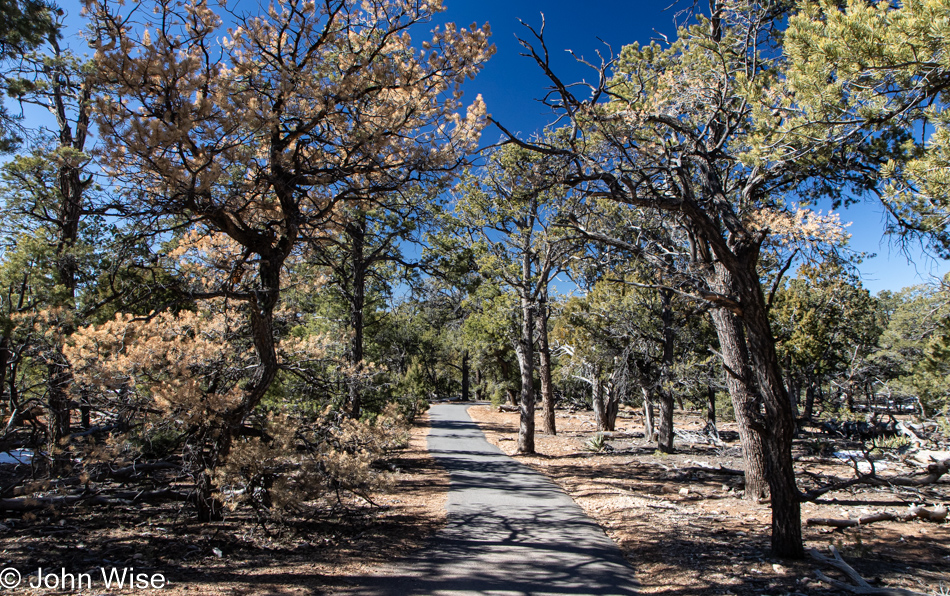
Today’s walk here on the Hermit’s Rest rim trail is one of extraordinary ease, other than the acclimation to the cold and elevation.
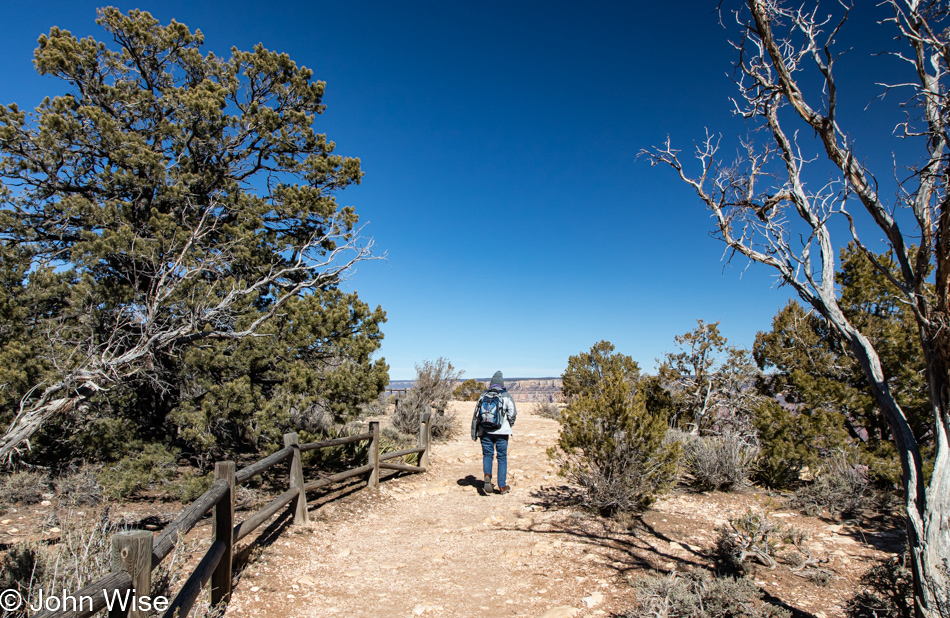
The swerve of the trail has the pleasant effect of bringing the canyon below into view again and again.
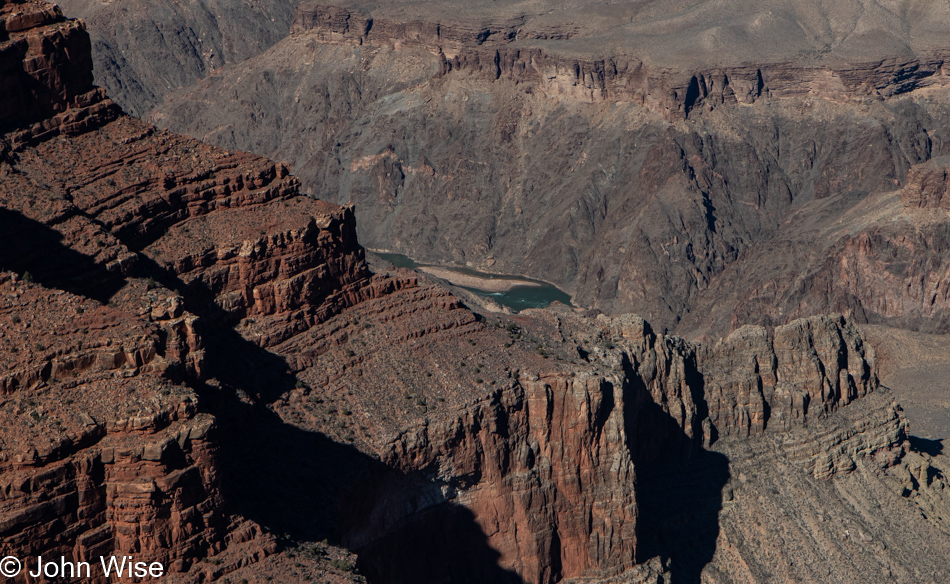
Look at the river in the center of the photo, just to its right, and on the opposite shore is Granite Camp, which is next to Monument Creek and just above Granite Rapid at river mile 93.8. On the 28th of October, 2010, we slept right down there. While I’m no hydrological expert, I’d wager that the sandbar you can see is the result of the Class 8 rapid just upstream.
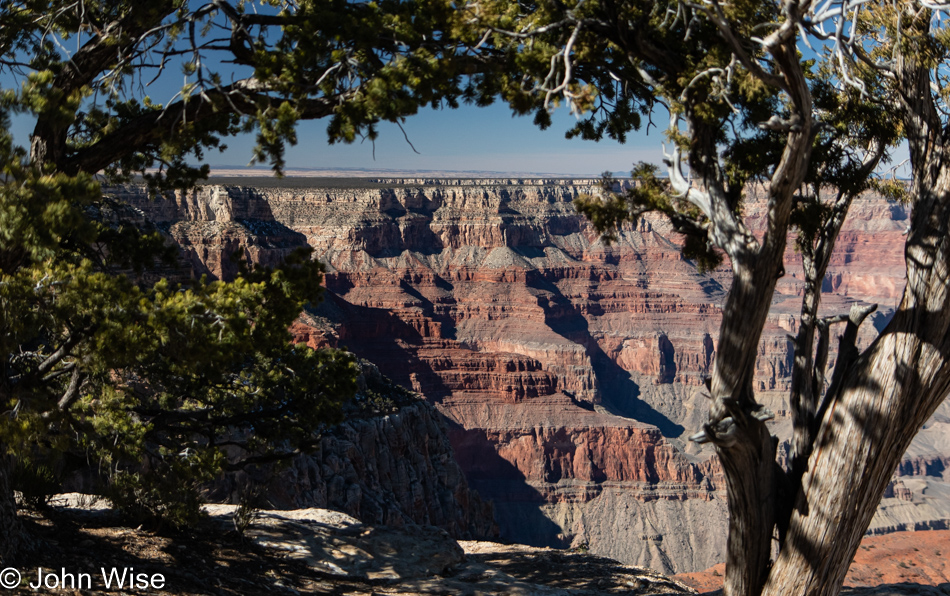
Framing, shadows, air quality, clouds or lack of them, season, time of day, and intensity of the sun all contribute to how we’ll see the Grand Canyon on any particular visit. Just stop in any of the gift shops and look at the photos on offer: aside from the fact they were taken by people with great cameras, being present at the right moment when conditions are just right plays an important role in what version of the canyon you might witness.
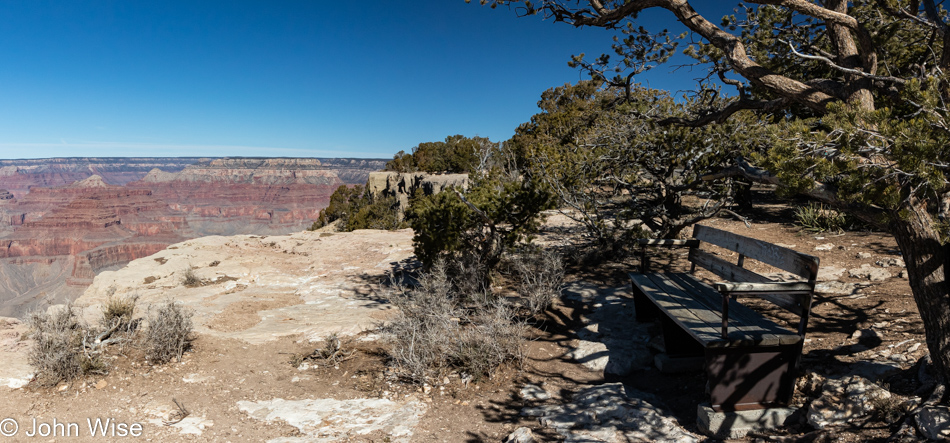
As the time inches past noon, we spot what looks like a perfect place for lunch right here at Mohave Point.
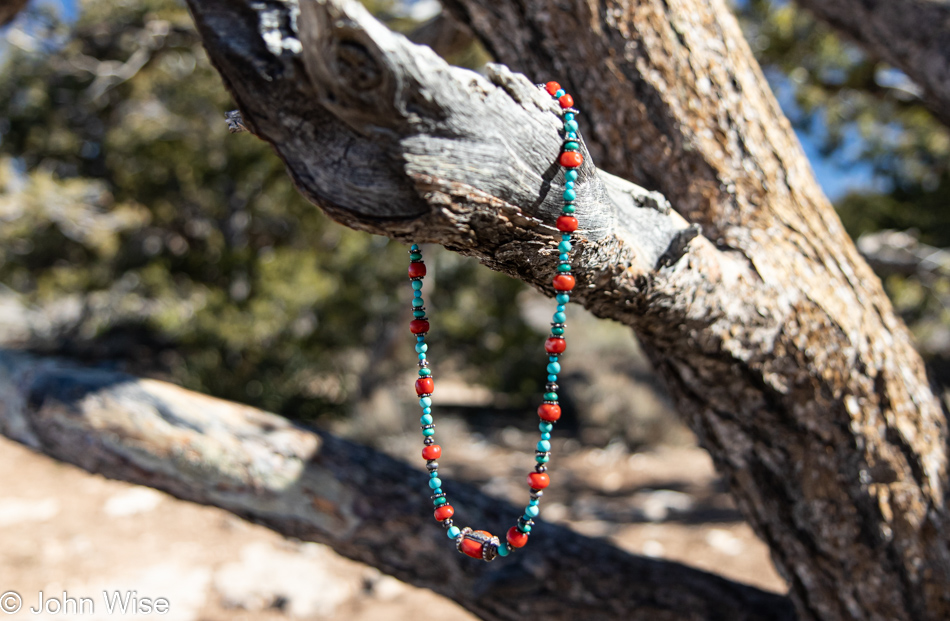
Before we set in for a mid-day meal, we spotted this lost necklace that had been placed on a branch awaiting its owner’s return. We are now the owners of this necklace; well, Caroline is. The chances of the person who lost it at some random spot on their walk ever returning to look for something they had no idea of when it fell from their neck is likely zero. So that it might continue to charm someone else who will now associate it with a perfect lunch stop at the Grand Canyon, it seemed only natural that it should continue its journey to other places.
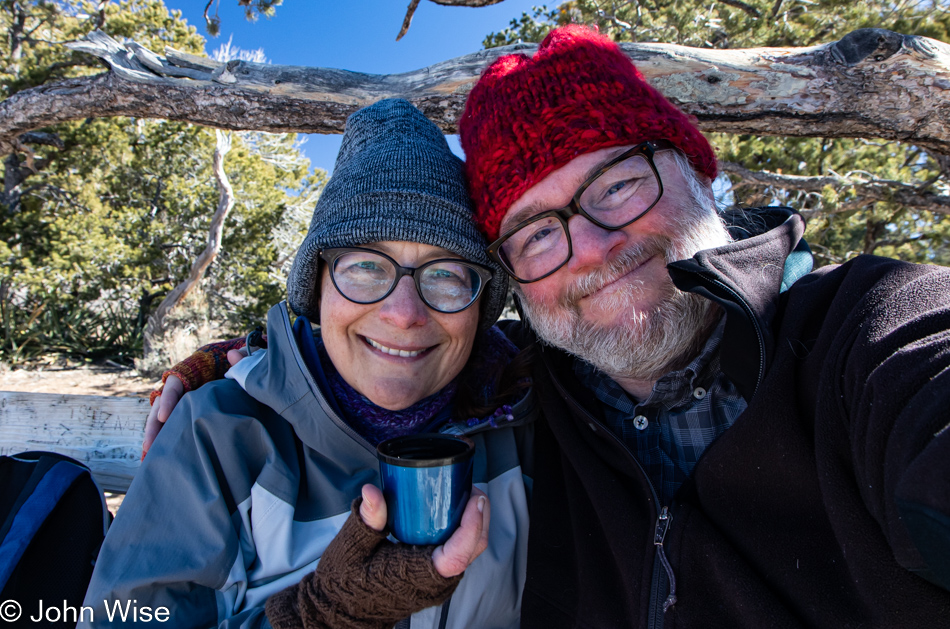
It was Caroline’s idea to bring our thermos with us and a couple of bags of Heisse Liebe (Hot Love) tea from Germany. [Heisse Liebe is the name of a popular dessert in Germany, a combination of vanilla ice cream with a hot raspberry compote. Just to give the gentle reader an idea of what the flavors in this tea are – Caroline] After sharing a sandwich we had picked up this morning, we enjoyed a couple of cups of hot love and the smiles that come with that. [And also the memories of our first shared cup of tea from this very thermos in Winter in Yellowstone back in 2010 – Caroline]
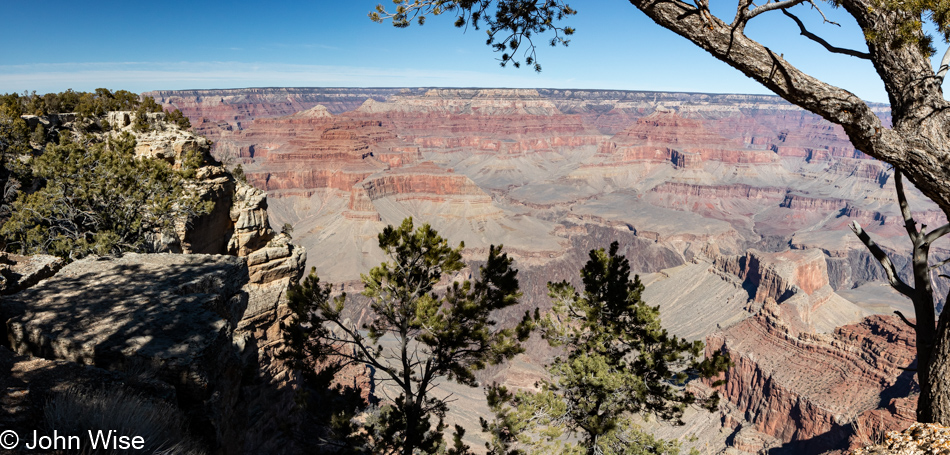
The perfect dessert feast for the eyes was next up on our mid-day break that included visual culinary delights such as this one.
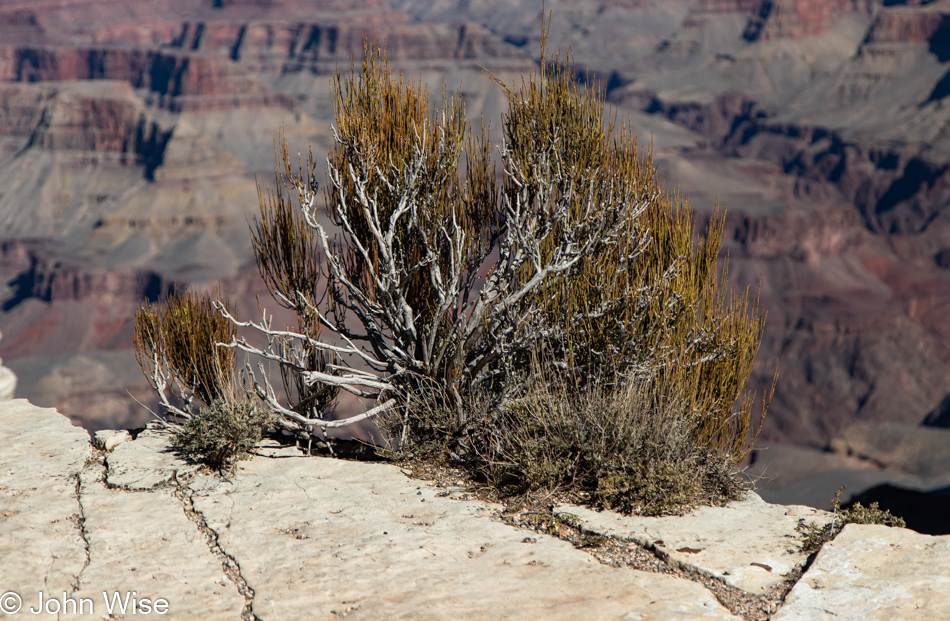
The closest either of us was getting to this Mormon tea plant growing on the very edge of the cliffside would be from this photo; while I love most everything about the canyon, standing near areas where a gruesome potential death awaits those of uncertain footing drills into my acrophobia with tensions that extend empathetically to those nearby.
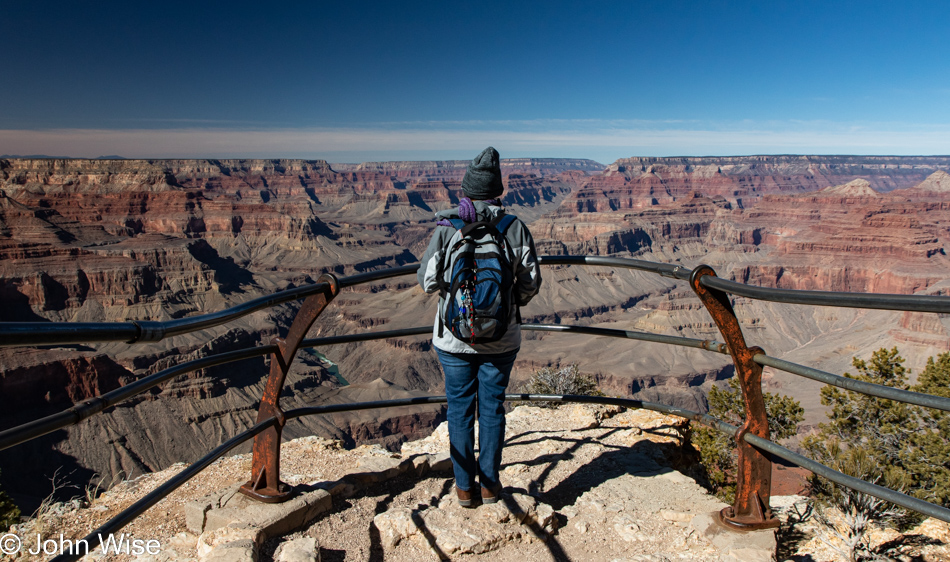
While neither you nor I can see Caroline’s face, I can tell you from experience that her eyes are telling the story of how deep these impressions she’s taking in are resonating within her. If not from nearly imperceptible extra moisture emanating from tear ducts, then the way she’ll smile at me with eyes pleading for my understanding of how monumental the experience and memories that flow through her. My wife, while vitally realistic, is also a romantic who loves indulging those things that plum her wellspring of love and sense of profound awe that we are so lucky to experience such gifts.
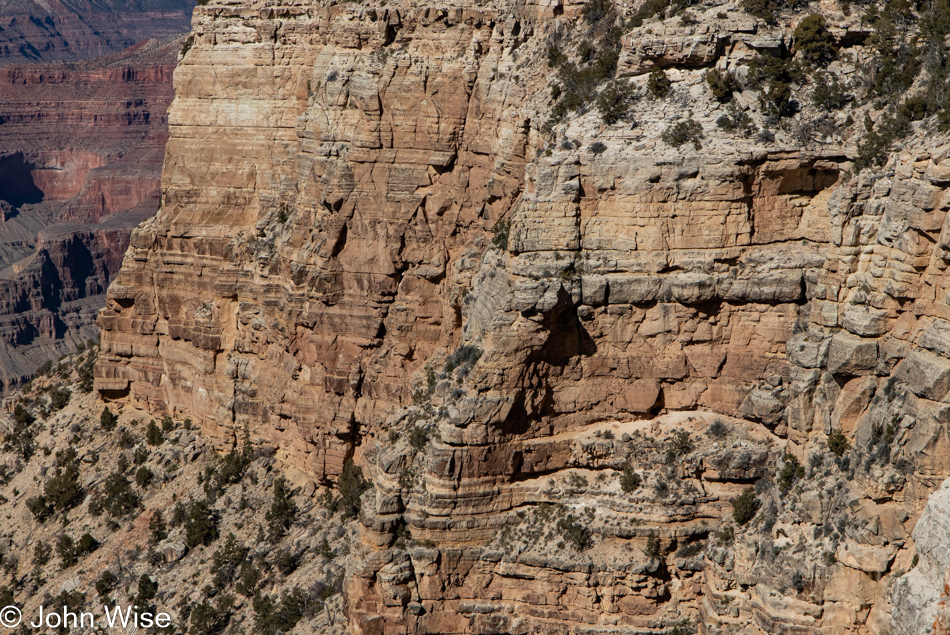
We made it out to the Abyss, but it turns out that we had nothing to fear as, apparently, we’d vanquished the monsters that might have looked into us. Instead, we are happiness personified by looking at an intrinsic beauty contained in the arrangement of rocks, plants, and reflected light that paints these images for all to see.
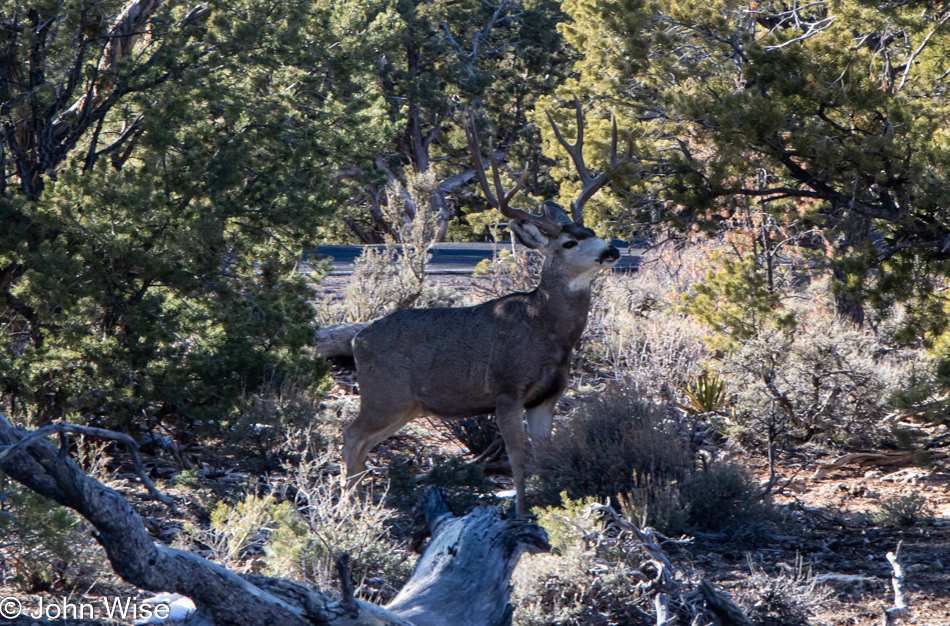
The cost to stay at the Bright Angel Lodge is $139 per day, and the price of three meals within the park will set you back between $100 and $200. Transportation to get to the Grand Canyon will depend on where you live, but if you are a mule deer, it’s all free, aside from the risk of being hit by a passing car. If you consider that a mule deer lives an average of about ten years, life in the Grand Canyon would cost us humans over $875,000. The lesson here might be: have cloven hooves instead of hands, and you may not have to toil a lifetime, never being able to afford real luxury.
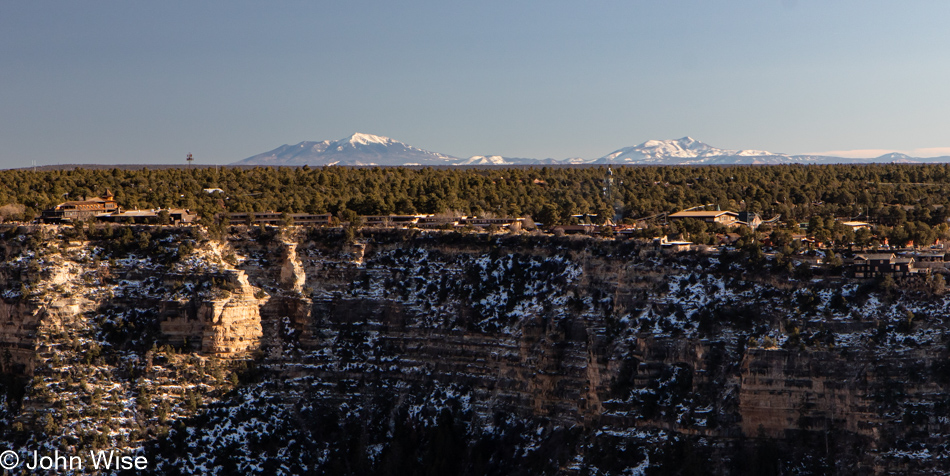
I can’t remember a visit with such clear air as we’re enjoying here today. That is Humphreys Peak standing over Flagstaff, meaning we can see 70 miles (112km) south of here.
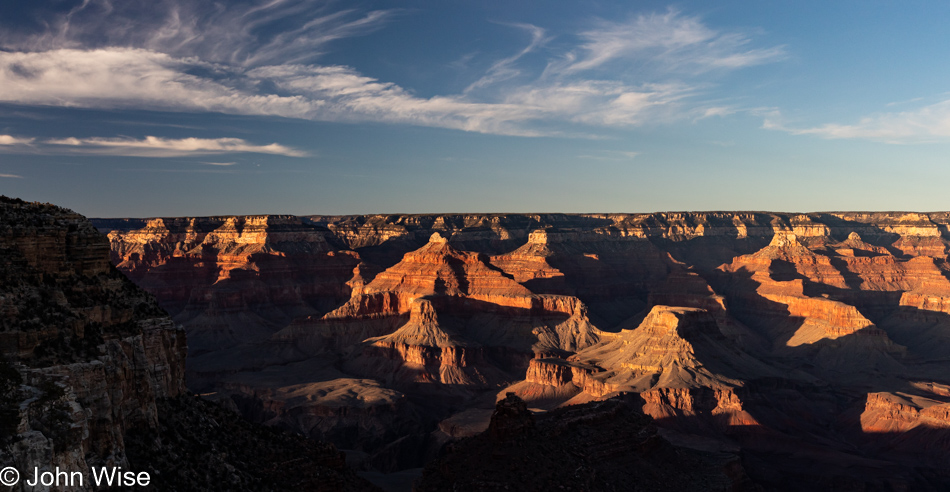
Maintaining a snail’s pace in order to allow even more of the canyon to seep into our souls, we required a solid 8 hours to walk 11 miles of rim trail out and back. It would have been 17.5 miles had we made it to Hermits Rest.
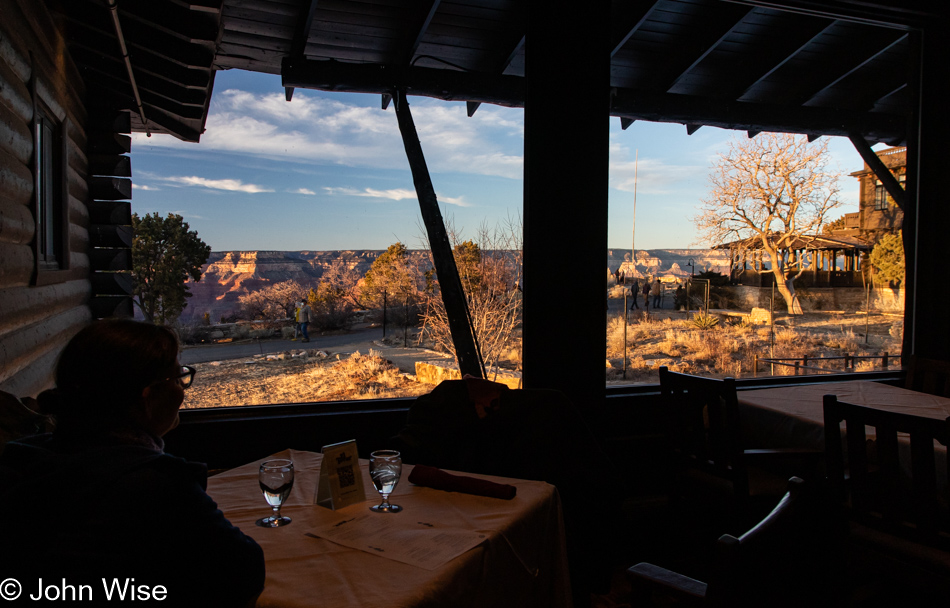
Returning at sunset, our hunger had grown large, and without a reservation at El Tovar, we could only hope for a table. We could have never guessed that this would be where we’d be sitting for dinner but this is exactly where we were seated and without any wait at all. It was dark as we finished, and the lounge had a waiting line, so a slice of apple pie and an Old Fashioned were not going to happen; instead, we headed to the upstairs part of the lobby to grab a table. I opened the computer to work on photos, Caroline brought out her knitting, and we listened to the piano player arpeggiate pop songs and lounge favorites into a glissando wormhole as big as the canyon just outside.
An encore of starlight for the walk back to our room was provided by an obliging clear sky that allowed us to marvel at a Milky Way that all too frequently is not seen by us city dwellers. Come to think of it, nothing about this time in the Grand Canyon is common to those of us who live in big cities.
